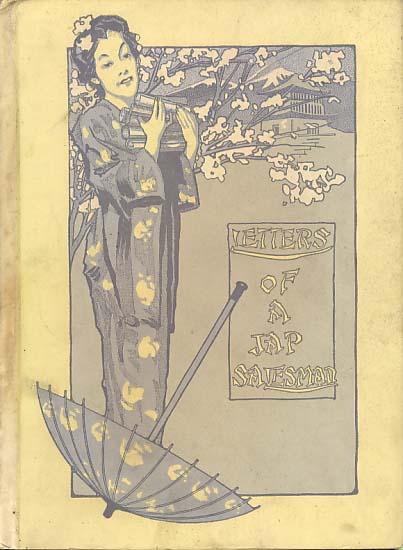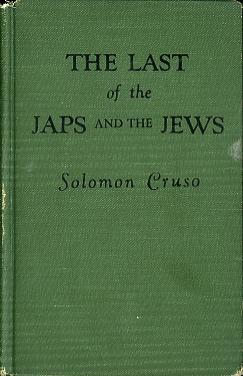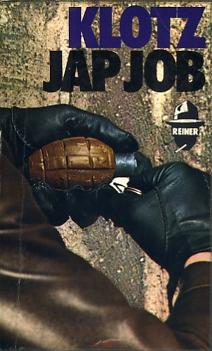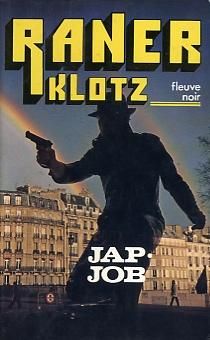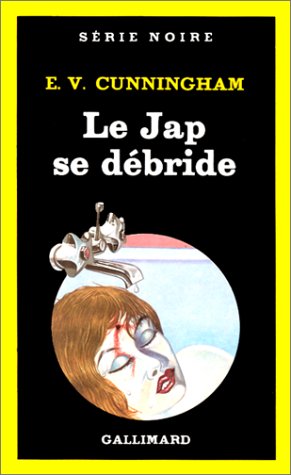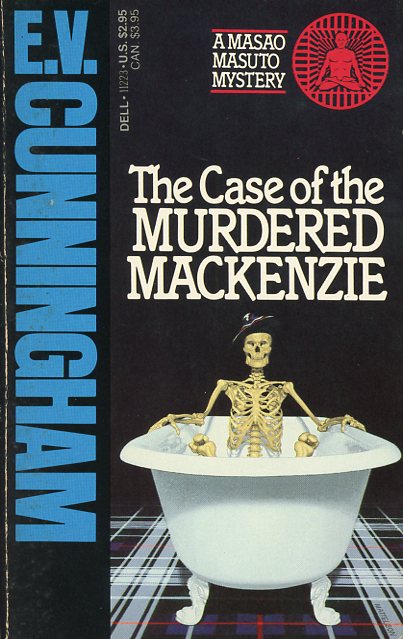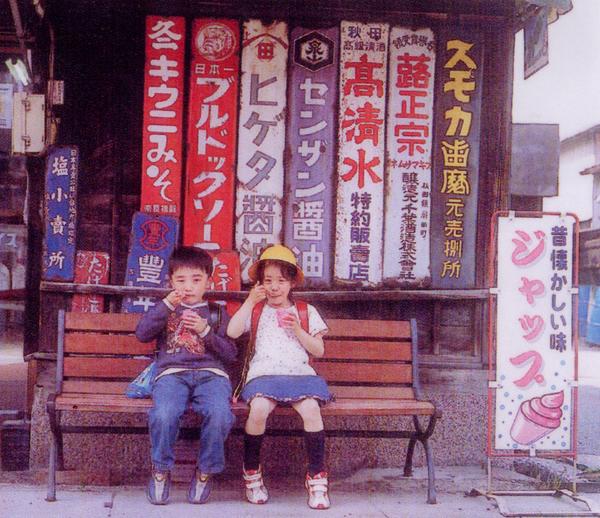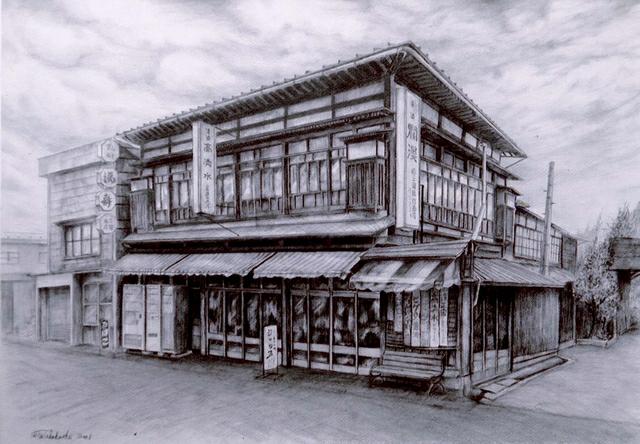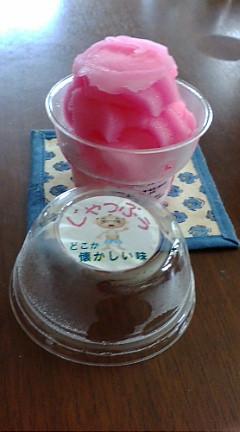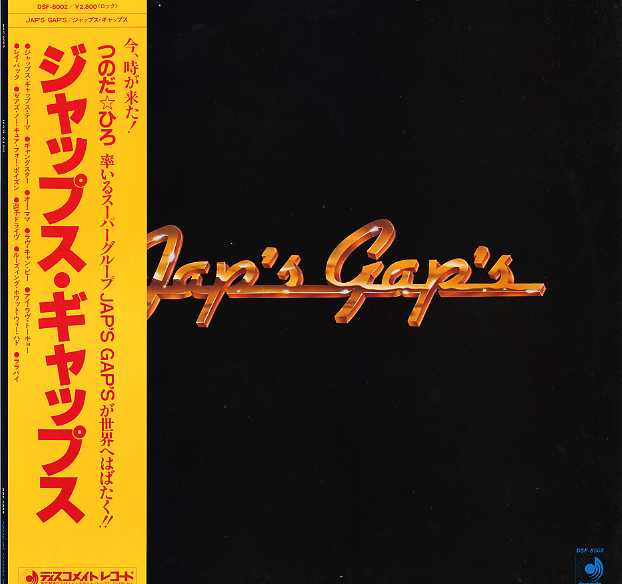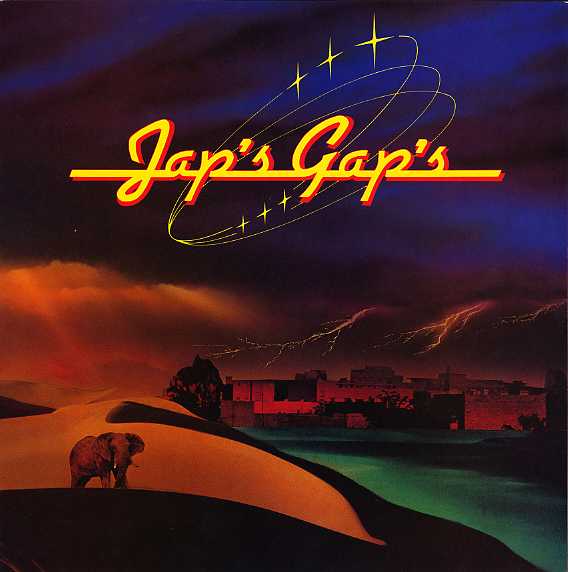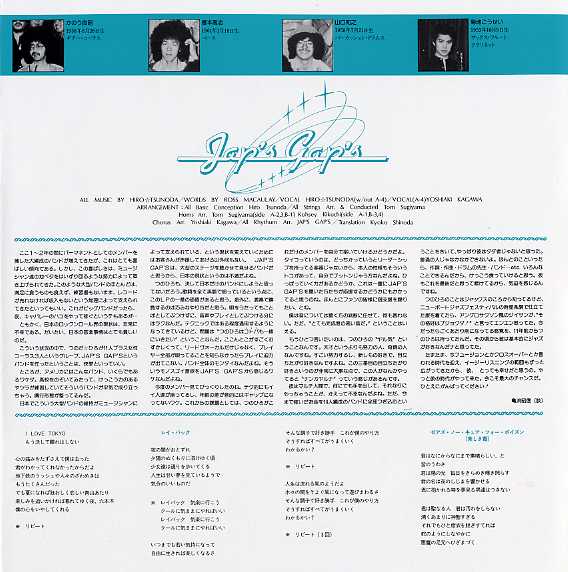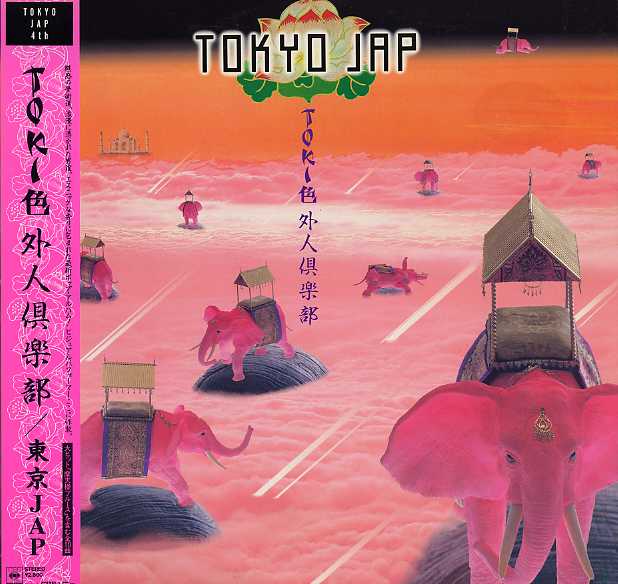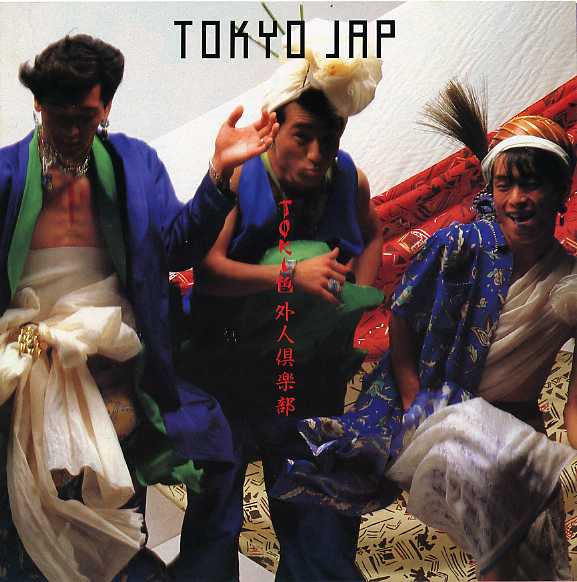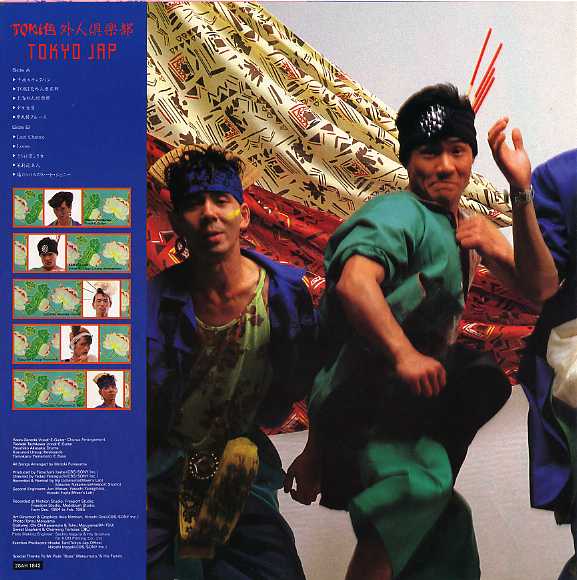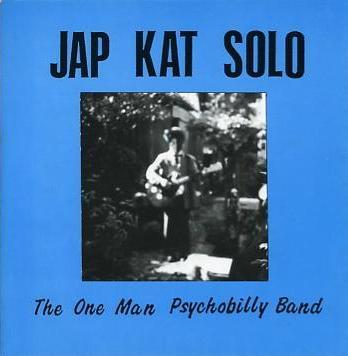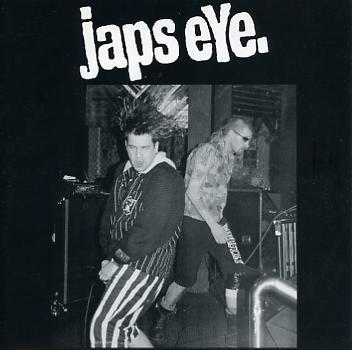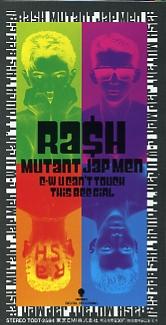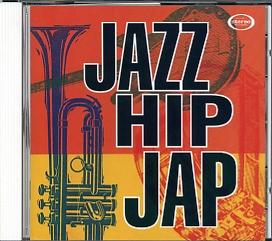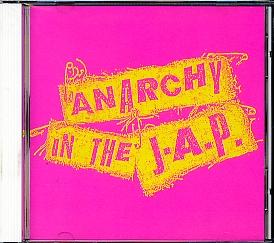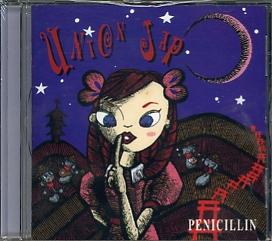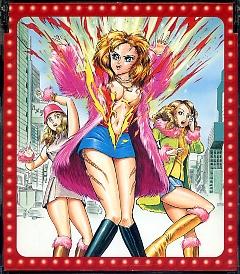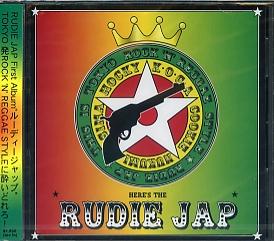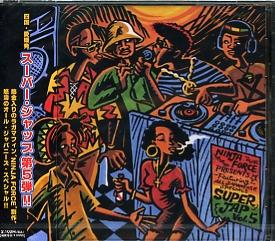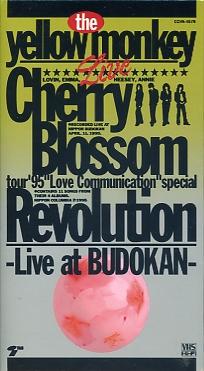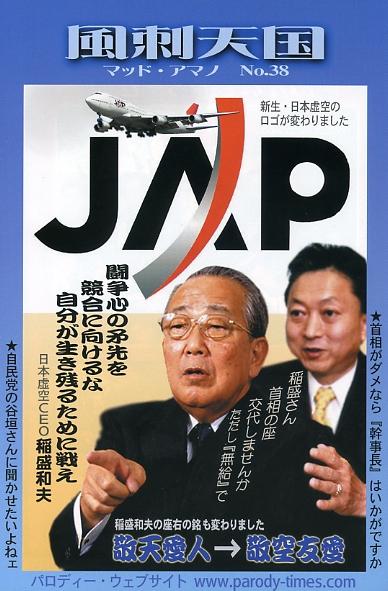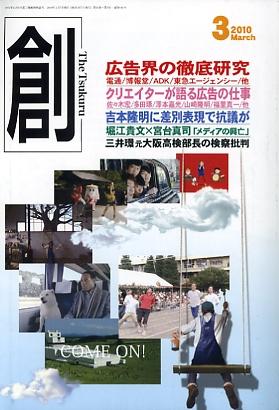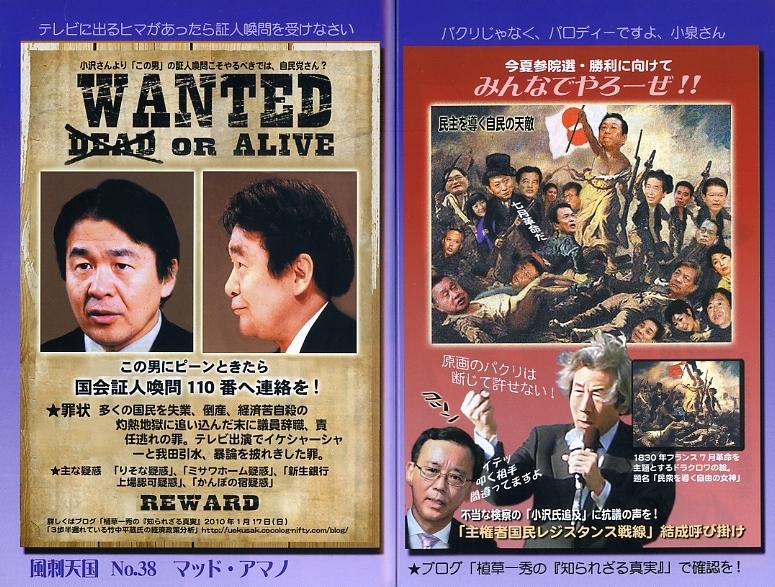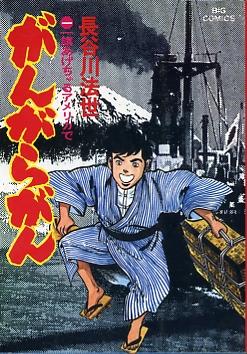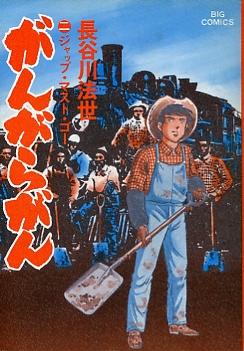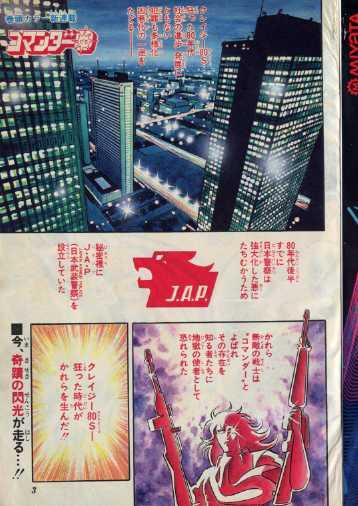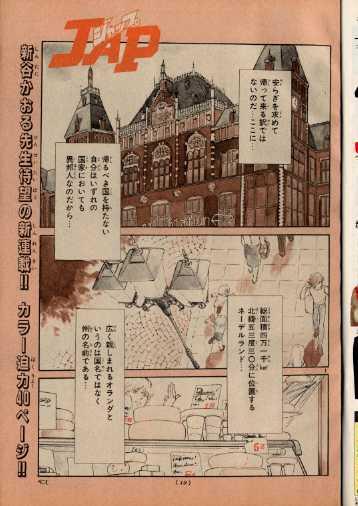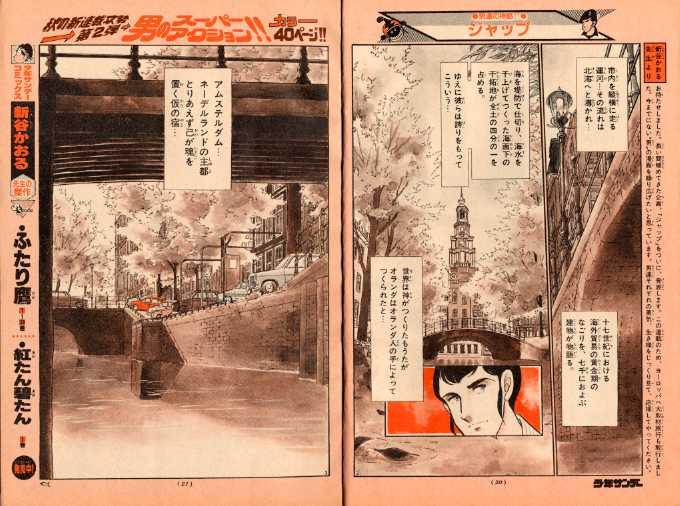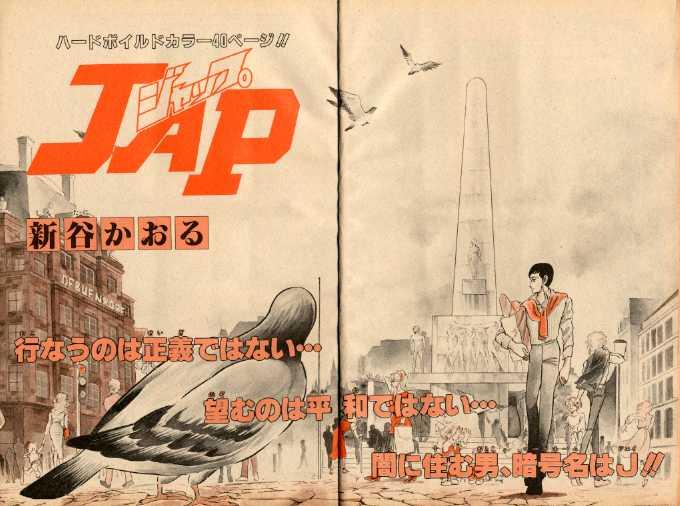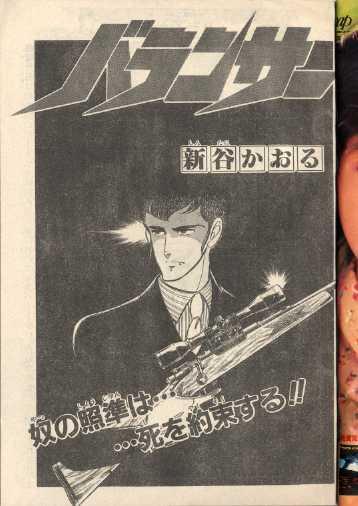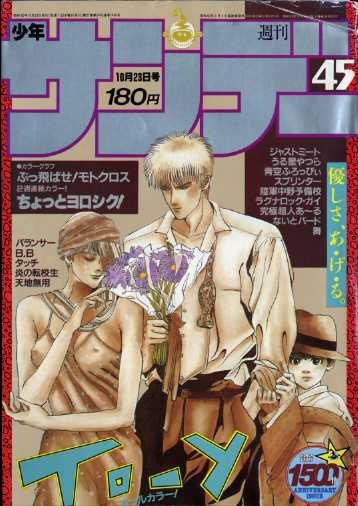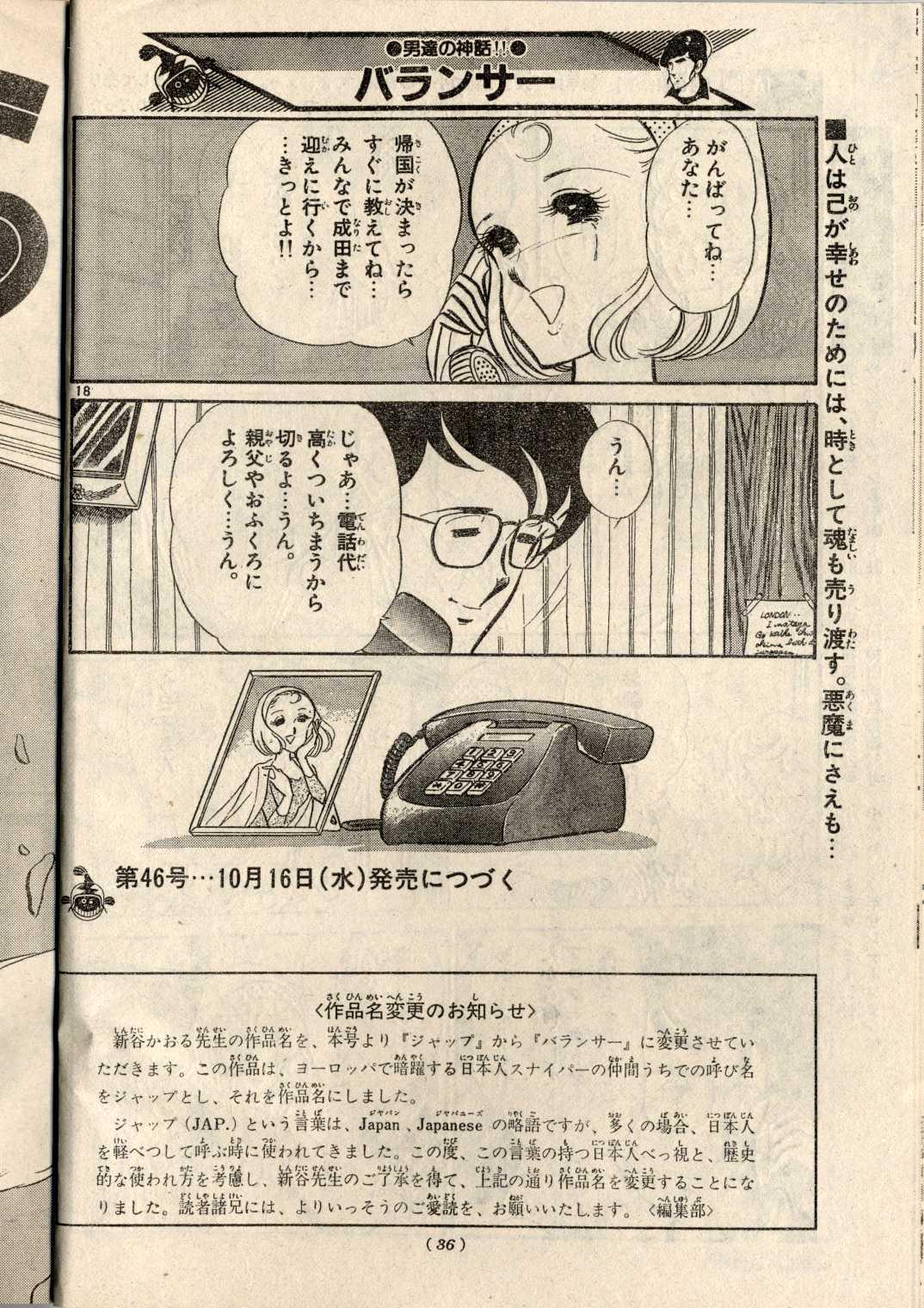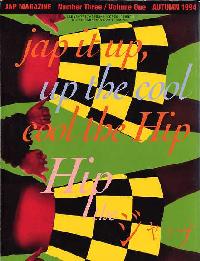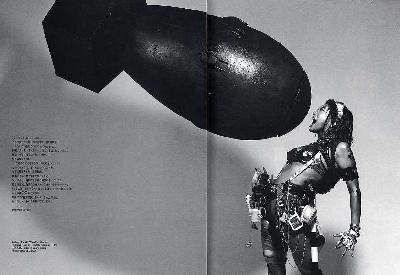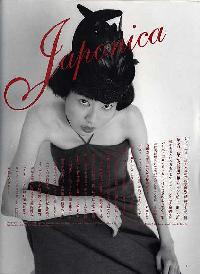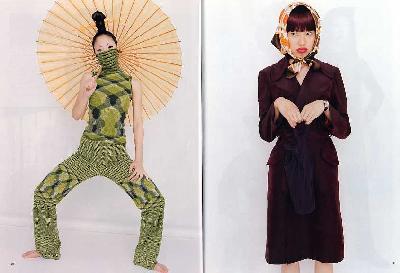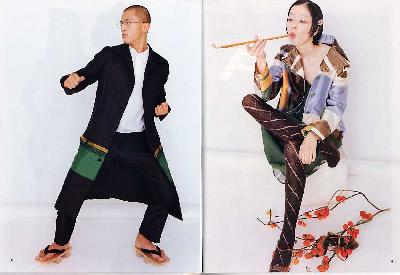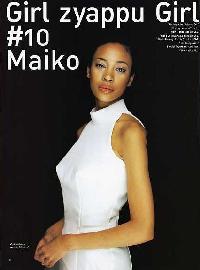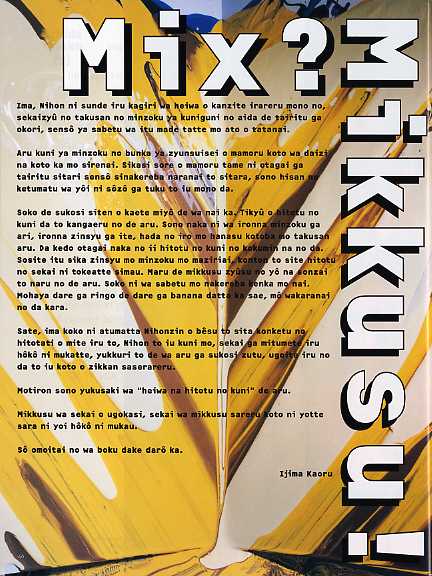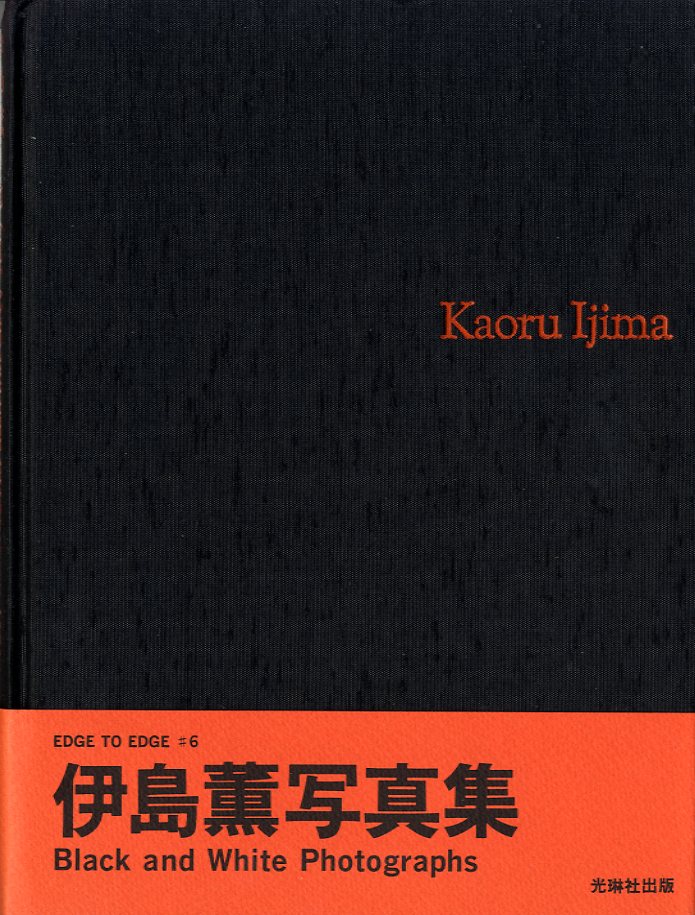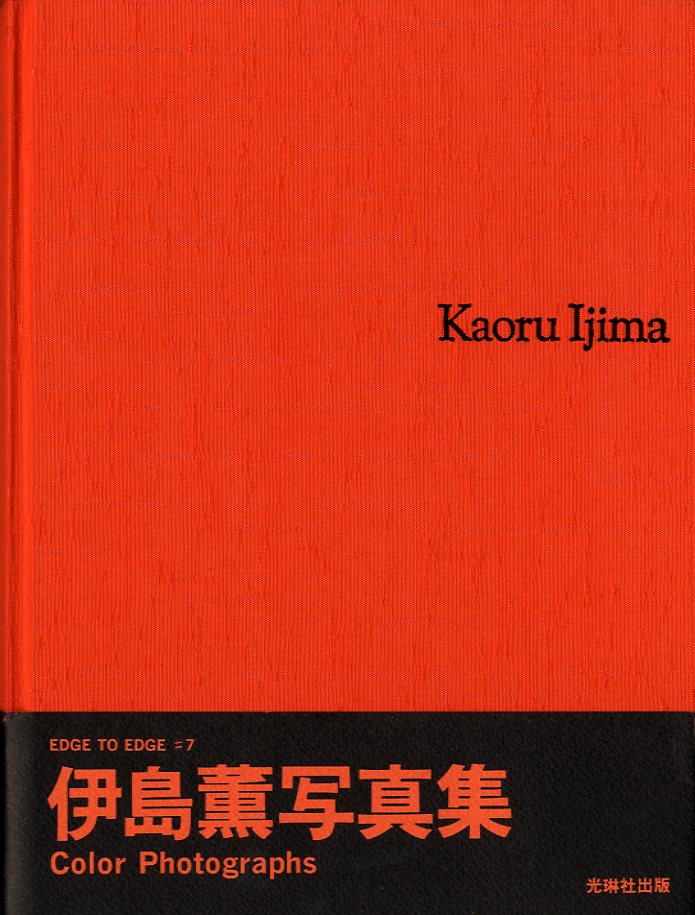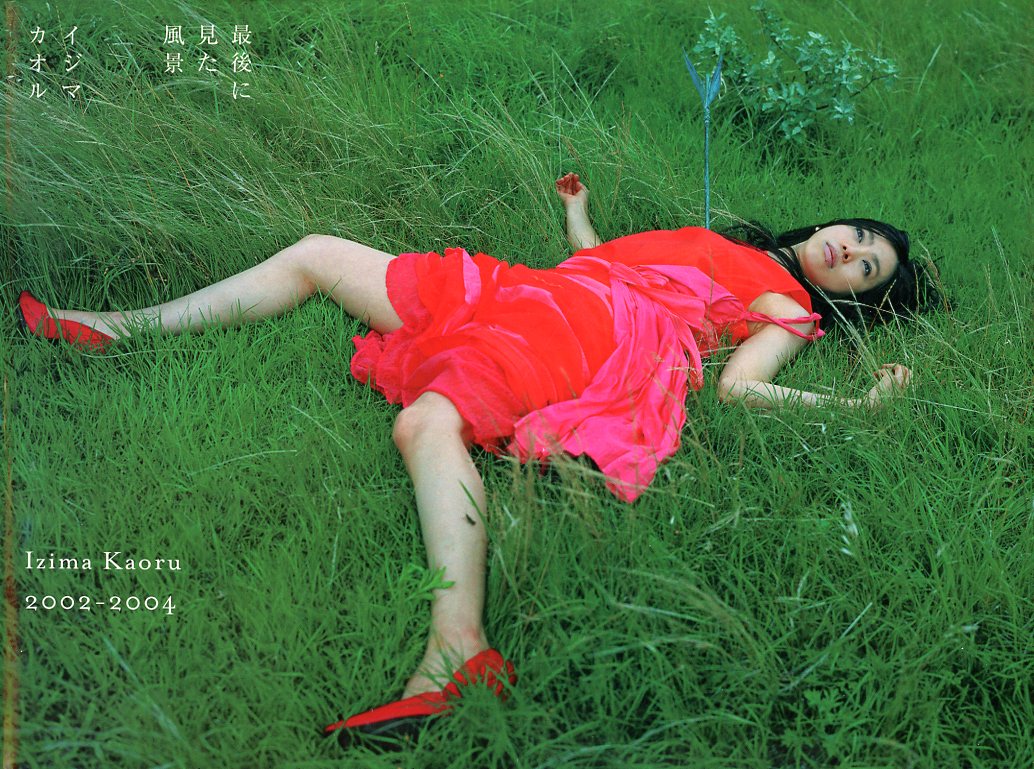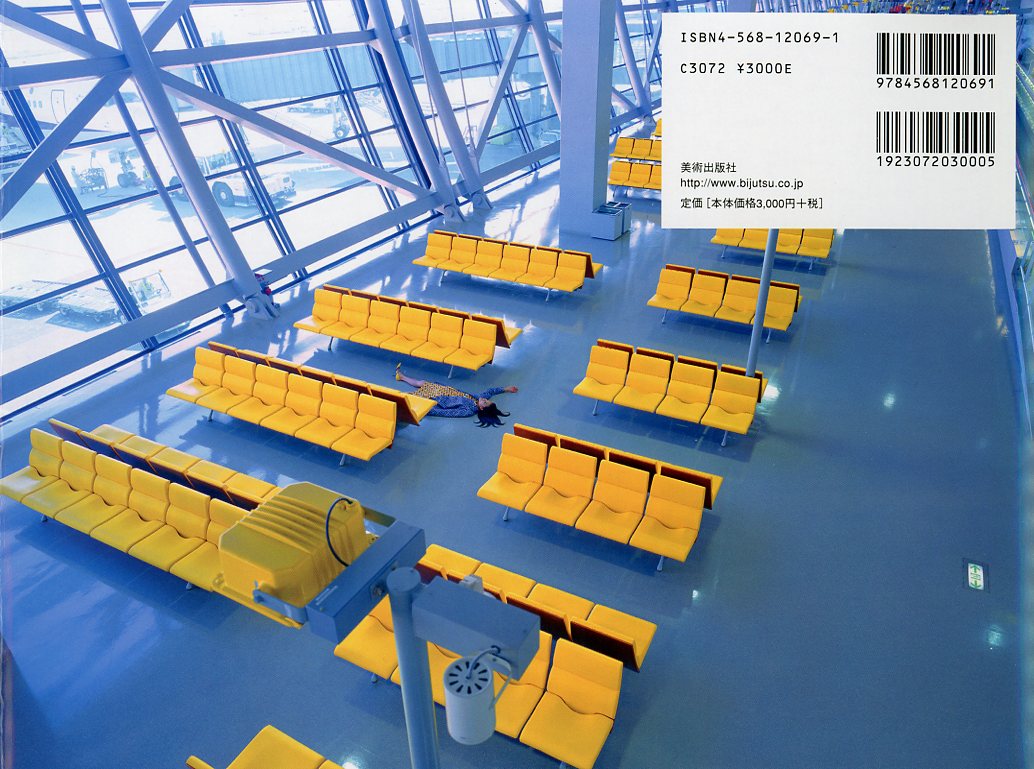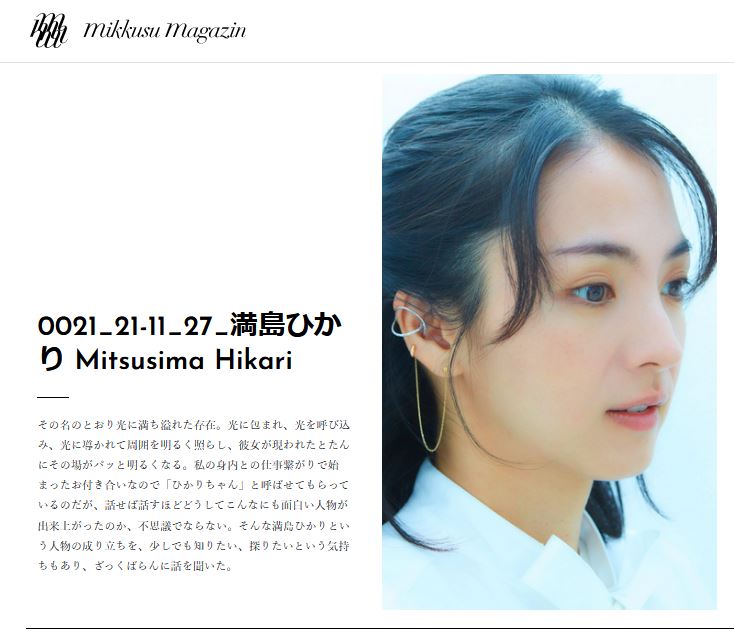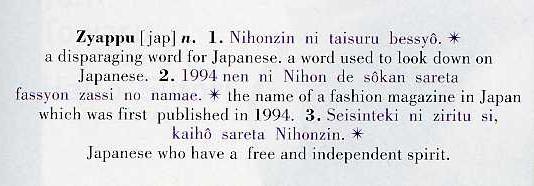
|
Jap, Jappu, Zyappu
A lexicon of pride and prejudice
By William Wetherall
First posted 10 July 2006
Last updated 27 September 2022
"Jap" in America
JACL
•
Pacific Citizen letters
•
Letters of Jap Salesman (Nogi 1914)
•
Last of Japs and Jews (Cruso 1933)
•
Children's books
•
"Anti-Jap" detritus
"Jap" in Europe
Neo-Nazi "Jap-Job" (Klotz 1971)
•
Masao Masuto in "Le Jap se debride" (Cunningham 1984)
"Jap" in Japan
Books
•
Fashion
•
Food
•
Music
•
Movies
Humor
Amano's "Japan Airlines Party" (2010)
•
English jokes
Comics
Nikkeijin themes
•
Tomizawa's "Commander 0" (1981-1982)
•
Shintani's "Jap" (1985-1986)
"Zyappu" magazine
"Zyappu" magazine gallery
Why "Jap"?
•
From "Jap" to "Zyappu"
•
"Zyappu" definitions
•
Oriental Check, Colored Beauty
•
jap it up
•
Peace Girl vs Little Boy
•
Japonica
•
Girl Zyappu Girl
•
"Mix? Mikkusu"
•
"Debû" tati
•
"Zyappu" bodies resuscitated
Izima Kaoru's Major publications and Mikkusu Magazin website
"Jap" in America
"Jap" has become a word not to be used -- at least in the United States -- in reference to anything associated with Japan, especially people of putatively Japanese ancestry. There are good sociohistorical reasons for this proscription -- at least in the United States.
The Federal government of the land of the free and the home of the brave set legal precedents for discrimination against people legally regarded as non-whites from its very beginning in the late 18th century. It passed laws excluding Chinese in the late 19th century. It excluded Asians from immigration in the 1920s. And in the early 1940s, during the Pacific War, it forcibly interned not only "enemy aliens" of Japanese nationality, but also American citizens who happened to be of Japanese descent, residing in the West Coast War Zone.
Terms like "Jap" and "Jappy" appeared in the titles of a few children's books in the late 19th and early 20th centuries. Such usage was not derogatory. At times it was possibly condescending, but mostly it was simply cute.
In adult non-fiction, "Jap" and "Nip" were often used by non-Japanese as short forms for people and things "Japanese" and "Nipponese", at least in informal speech, but also in newspaper headlines and sometimes in the body of articles. Such abbreviations would have been impolite if not unacceptable in formal matters, but whether it was disparaging in would have to be determined by context in writing and speech, as well as by manner of utterance in speech.
Standards of judging whether usage is discriminatory remain the same today, since a word cannot be discriminatory without intent. However, standards of acceptability have significantly changed, as most dictionaries now flag such words as slang which is disparaging and offensive, and many style sheets list them as unacceptable in publications.
However, some speakers and writers are not aware of these standards or are only dimly aware of them. And a few choose to flaunt them for reasons they consider justifiable.
Some writers, for example, strive to reflect reality and otherwise be accurate with respect to how, say, a character in a novel actually speaks, or the narrator of a story being cited actually wrote. Still others use such terms with new meanings.
"Jap" was not uncommonly used in non-fiction titles and headlines before the Pacific War. The term became much more common during the war, but again not necessarily with the intent to disparage or offend.
Awareness that some Japanese and many non-Japanese of Japanese descent found the term offensive, spread after the war, especially from the 1960s and 1970s, when more attention began to be given, in mass media and in classrooms, to the experiences of immigrants from Asia and Americans of Asian descent generally, and to the wartime internment of Americans of Japanese ancestry and Japanese on the West Coast.
"Jap" is now on a number of watch lists, and generally the public use of "Jap" is immediately and aggressively protested. It still, however, has currency, especially in reminiscences of the Pacific War by former POWs, but also in realistic fiction.
Here I will introduce only a few titles of prewar fictional works, after first looking at the "Jap" controversy on the pages of Pacific Citizen, the organ of the Japanese American Citizens League (JACL).
Japanese American Citizens League
That the United States could order the round-up and herding of its own citizens on the West Coast into remote "Relocation Centers" from California to Arkansas, was possible because the government already had a long history of "yellow peril" inspired Asian exclusion laws that severally restricted immigration from Asian countries and did not allow Asian immigrants to naturalize. Behind this anti-Asian racism was an even longer history of white-supremicism that to some extent continues today in not a few pockets of American society.
It is therefore entirely understandable that a human rights organization like the Japanese American Citizens League should attempt to persuade localities to relegate street names like "Jap Road" to the dustbins of history, and monitor mass media for gratuitous use of words like "Jap" by radio and tv personalities, politicians, and other public figures. A number of JACL members, however, seem to feel that "Jap" cannot possibly be used except as a derogative.
Unfortunately -- or "fortunately" as I say in one of the following letters to Pacific Citizen, JACL's official newspaper -- life is not so simple, for Americans of Japanese ancestry do own the word "Jap" or otherwise have a monopoly on its use.
Pacific Citizen letters
Articles in the Pacific Citizen, about actions taken against public figures who have uttered the J-word on the air or elsewhere, or against municipalities that persist in keeping their Jap Roads or whatever, are perennial. Most such actions are reasonable, and most commentary in op-ed columns and letters to the editor do not move me to respond in kind.
Occasionally, though, someone writes something that, while well-intended, is simply not truthful or doesn't make sense in the real world as I know it. The following letters are two of many efforts I have made to rescue "Jap" from unreasonable censorship.
Letter 1
This letter appeared on page 2 in the 20 June - 3 July 2003 issue of Pacific Citizen. It was inspired by a number of PC articles, though I specifically mention only two.
|
Zyappu and Aoime There were two articles on "Jap" in the May 2-15 issue of PC. As a writer and editor, I have always been cautious about the use of this and other words having the potential of offending some people. Yet I stop short of unconditional censorship, as no word is disparaging without an intent to disparage. Some examples come to mind. Kenzo Takada opened his famous Jungle Jap boutique in Paris in 1970. Soon there were outlets in New York and Tokyo. People in France and Japan didn't mind. Kenzo's hippy chic Jap label offended mainly Japanese Americans. In the 1990s, a very interesting fashion quarterly debuted in Tokyo. Its name was written in katakana that would be romanized "Jappu" in the more common Hepburn system. The English title "Jap Magazine" also appeared on the spine, cover, and contents page. There were features called "Jap Interview" and "Jabber Jap". The photography and art work were street-smart, sassy, and totally unconventional. In its third year, the magazine was renamed "Zyappu" in Latin script. This is the Kunrei romanization of the katakana name, which gradually disappeared. Eventually, all Japanese text was printed in Kunrei as an expression of the magazine's evolving world view. Shortly before the name change, the following definition began to appear on the contents page of every issue: zyappu [jap] n. -- 1. a disparaging word for Japanese. 2. the name of a fashion magazine in Japan which was first published in 1994. 3. Japanese who have a free and independent spirit. Whether "slant-eyed" is worse than "blue-eyed" may depend on who you are and where you live. I have lived in Japan most of my life. And I have been personally referred to, orally and in print, as Aoime (blue eyes) by people motivated to slap this common racialist label for "Caucasian" on me. One problem is, my eyes are not blue. Another problem is, I do not welcome being racialized by anyone anywhere (one thing nice about living in Japan is there are no race boxes). Some people in Japan use Aoime (among several other terms) with an intent to offend. Some don't. Aoime are good in some eyes, bad in others. So could there also be good Japs and bad Japs? Perhaps its not what's in the word, but what's in the heart. Bill Wetherall |
Letter 2
Predictably my letter drew some fire. One reader thought I was promoting the use of "Jap" as a reference to Japan or people who consider themselves ancestrally related to the country. So I wrote another letter, just to set the record straight, and it was published on page 2 in the 5-18 September 2003 edition of Pacific Citizen.
|
Case-by-case If Lieutenant Senaha (PC, July 4-17) would re-read my letter (PC, June 20 - July 3), he will discover that I did not advocate that "Jap" be accepted as a general reference to someone of Japanese ancestry of any race or ethnicity. All I did was suggest that "Jap" has a more complex semantic range than some word-hunters seem to understand. I have been a PC subscriber and reader for three decades, beginning in Berkeley during the 1970s and continuing from the early 1980s as a member of the Japan Chapter of JACL. I am very familiar with the history of "Jap" in North America and elsewhere. As an academic, journalist, and activist, I have written in both English and Japanese on discriminatory terminology and political correctness in Japan and the United States. Fortunately, the emotional tapestries of words like "Jap" and "nigger" in the United States are not as simple as Lieutenant Senaha seems to believe. Just as his fictive "we JAs" do not own the word "Jap", the final authority on the meaning of "nigger" is not NAACP but the many people -- musicians, comedians, novelists, and others -- who continue to use this word with a variety of meanings. I say "fortunately" because I feel that teaching people to tolerate the varieties of human emotions associated with words that in some contexts may be offensive is ultimately preferable to the rigid thought control that results from censoring words for their own sake. A hard-and-fast "no Jap" policy on the part of JACL would carry the message that JACL's members are not very enlightened. A case-by-case approach would be more honest and effective. Bill Wetherall |
The Letters of a Jap Salesman (Nogi 1914)Hogami Nogi (Arthur Thompson Garrett) This publication was issued by the salt company as a holiday greeting. The letters are presented as those of a Japanese salesman, but they were actually written by Arthur Thompson Garrett (b1871), a short story writer. Garrett wrote at least five stories from 1908-1909 for The Gray Goose, a monthly magazine of short stories that ran about 132 issues from 1896-1909 (Phil Stephensen-Payne, Galactic Central Publications, The FictionMags Index). Poppenburg's Peril, July 1908 He also published a short story in 1908 in the weekly Illustrated Sunday Magazine, a Sunday magazine supplement distributed by many East Coast newspapers from circa 1905-1920 (The Pittsburgh Gazette-Times; Phil Stephensen-Payne, Galactic Central Publications, Magazine Data File). Stretching the Rubber Market, 13 December 1908 |
The Last of the Japs and Jews (Cruso 1933)Solomon Cruso This oddly written novel is dedicated to "the Caucasian Race, the white Aryans" who fell on the battlefields of the world in the early 1980s. The story, a futuristic historical romance told from the vantage point of the 25th century, is possibly a monument to the power of love to conquer all -- in this case the entire world -- as its racially hybrid hero sets out to right the wrongs of capitalism, white supremacism, and religious intolerance. A global war in the 1980s leaves the United States totally defeated. China, India, and Turkey control most of the world. The northern part of the Western Hemisphere reverts to the Indians, who five centuries are living in complete harmony and hunting buffalo. The Jewish nation has been exterminated in the wars and Japan has been destroyed by a tidal wave. In 2390, three-million Indian warriors amass along the east of the Western Hemisphere along the North Atlantic to repel an invasion of whites that, "according to their belief, was supposed to come unexpectedly from the East, from the Rising Sun, from the other side of the ocean, and attack them in force." The invasion never comes, and a century later, the Redskins are still waiting. The drama unfolds mostly in the form of explanations of the conditions that preceded and precipitated the wars of the 1980s. The hero, Chang Kochubey, describes himself as looking entirely "Caucasian" (after his Russian father, an amalgamation of Tartar and all manner of European bloods), but he identifies as fully "Mongolian" (after his full-blooded Manchu mother). Arabella, his lover and eventual wife, whose father despises him as a "Chinaman" and "half-breed", is "a full-blooded white girl". For a longer review of this novel, see Cruso 1933 on The Steamy East website. |
|
|
"Jap" in Europe
As in the case of terms like "*nigger" and "chink", which have long been avoided in public American media and censured when someone protests their use, the word "jap" meets much less resistance not only in Europe but in Japan. Why this should be so in Europe is mostly due, I believe, to the fewer numbers of Japanese migrants to Europe and less race-based legal discrimination against Japanese who settled and their descendants -- compared especially with the United States, where racialism based on white supremicism inspired white supremicist racism in Federal, state, and local laws.
The comparatively greater tolerance of "jap" Japan, where it is Japanized as "jaapu" (ジャップ zyappu), is partly due to lack of intimacy with "jap" as used in English, whether "American" or "British" (or other varieties of) English, and the tendency to localize the nuances as well as the phonetics of English and other foreign terms. Japanese "jappu" thus has a life of its own, unrelated to the English life of "jap".
Foreign words transliterated into katakana, for use by speakers and writers of Japanese, become Japanese words, pronounced in Japanese and used to convey meanings associated with them by their mostly Japanese users. The meanings are not necessarily those of the people who use the transliteraed English words in, say, the United States or the United Kingdom. Japanese "raisu" (ライス) may have been inspired by English "rice", but in Japanese it is used to mean cooked rice served on a plate and usually eaten with a fork or spoon, whereas Sino-Japanese "gohan" (ご飯、御飯) signifies steamed, especially polished short-grained rice served in a bowl and usually eaten with chopsticks, and Japanese "kome" (こめ、米) refers to uncooked, usually polished rice.
"Jappu" as a katakana form -- not a word until it is invested with meaning by usage in a context that gives it meaning -- may reflect European names like Jupp, Jap, Japp, in which the "J" has been rendered /j/ rather than /y/ -- never mind how the name might be pronounced by its owner. Yap island is, of course, Yappu, but the name Jung is will be transliterated "Jungu" (ジュング) or "Yungu" (ユング) on a case by case basis, and the basis may be more whim than knowledge of how the person named pronounces the name.
This gives rise to instances where "jappu" in Japanese that corresponds to "jap" in English as an abbreviation of "Japan" or "Japanese", and to expressions that have no relationship to "Japan" or "Japanese". A number of examples of of the latter are shown here.
Jap-Job (Klotz 1971)[Claude] Klotz [Claude] Klotz Lurking in the background of this French thriller is a Paris-based Japanese Neo-Nazi organization. Fortunately Raner, the hero of the series, is adept in kendo and other martial arts. Jap-Job has also been published in 1989 and 1993 editions with different covers. A Spanish translation came out in 1974. The title is Number 3 in Claude Klotz's "Raner" (originally "Reiner") series, which ran to thirteen titles. 1. Casse-Cash, 1971 2. Putsch-Punch, 1971 3. Jap-Job, 1971 4. Alpha-Beretta, 1971 5. Dolly-Dollar, 1972 6. Bing-Banque, 1972 7. Micro-Mic-Mac, 1972 8. Aïe-Heil, 1973 9. Cosmos-Cross, 1973 10. Tchin-tchin Queen, 1973 11. Flic-Flash, 1973 12. Karaté-Caramel, 1975 13. Dingo-Dague, 1975 Jap-Job is reviewed by Luj on his Noirs website, where he also introduces the Raner series and shows images of each of the thirteen titles. According to Luj, in 1975 the writer Sylvain Reiner asked the publisher not to use his name, hence change in the hero's name to "Raner" in Dingo-Dague, the last title in the series, and in subsequent editions of earlier titles. The series was reissued from 1979 concomitant with a television series based on the Raner stories from 1979-1981. A few titles were reissued in 1989 as tie-ins with the popularity of Klotz's Killer Kid, which was made into a movie known in English as "The Boy From Lebanon", about an orphan in Paris who is recruited to assassinate the French president. |
Le Jap se debride (Cunningham 1984/1985)E. V. Cunningham E. V. Cunningham Howard Fast (1914-2003), writing as E. V. Cunningham, wrote a series of stories collectively called "The Masao Masuto Mysteries" featuring Masao Masuto, a Beverly Hills PD nisei detective described in one blurb as "a cultured stranger in an even stranger land of traffic-clogged freeways, artery-clogging fast food, and brutal murders." This is a French translation of the last story in the series, called "The Case of the Murdered Mackenzie" in English. See Masao Masuto on The Steamy East website for details. The English version opens like this (page 1). Detective Sergeant Masao Masuto, his wife, Kati, his twelve-year-old son, Uraga, and his ten-year-old daughter, Ana, all departed for Japan on the very same day that Eve Mackenzie -- as the subsequent indictment said -- murdered her husband. The next paragraph introduces Masuto and Kati as "Nisei, which meant they were American-born of Japanese-born parents." Of the couple, "Kati was less eager than her husband to visit the land of her ancestors" for "She was a nest-builder, and her own small universe -- her cottage in Culver City, her two children, and her husband -- satisfied her completely>" But |
"Jap" in Japan
The terms "Jap" and ジャップ appear with some frequency in Japan, where they have been used by writers, fashion designers, musicians to abbreviate "Japan" or "Japanese". Japanese writers, including one who studied, worked, and traveled in the United States, have also used these words in their fictional and non-fictional writing about their experiences as as a "Jap" outside Japan.
"Jap" in book titles
Japanese publishers have no difficulty distributing books with "Jap" in their titles. In the following book, it was term of endearment.
佐山 和夫
「ジャップ・ミカド」の謎 ― 米プロ野球日本人第一号を追う
東京:文藝春秋、1996年4月
260ページ、単行本
Sayama Kazuo
"Jappu Mikado" no nazo -- Bei puro yakyū Nihonjin dai-ichi-gō o ou
< The mystery of "Jap Mikado" / First Japanese in American Professional Baseball >
Tokyo: Bungei Shunjū, April 1996
260 pages, hardcover
This is a "non-fictional mystery" about Mikami Gorō (三神吾朗 1889-1958), who played baseball in the United States in 1910s, two decades before the start of professional baseball in Japan in 1934.
Mikami joined the baseball club at Waseda University after graduating from high school in 1908, and he was member of the Waseda team when it made an expedition to America in 1911. In 1913 he studied at Knox College, in Illinois, which was then a black college. He played shortstop and sometimes pitched on the Knox team, and in 1915 he became its captain.
During the summer of 1914, he played with the All Nationals, a roving (barnstorming) professional baseball team comprised of players of various races, mostly black but also white, Indian, Latin American, Hawaiian, and Oriental. The team was based in Kansas city and Iowa, and later became the Kansas City Monarchs in the colored league.
In 1916, he went on to study economics at Illinois University. He later worked for Mitsui Bussan, and no longer played baseball.
| "Jap" book gallery | ||||
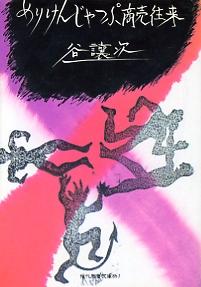 Tani Joji Meriken Jyappu 1927 (1975) |
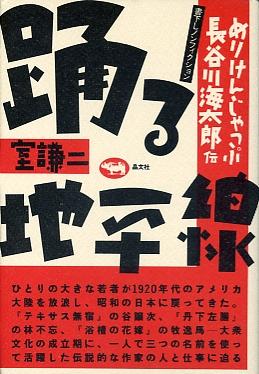 Muro Kenji Odoru chiheisen 1985 |
 Forthcoming |
 Forthcoming |
 Forthcoming |
"Jap" in fashion
Kenzo Takada (高田賢三 Takada Kenzō b1939), better known in the fashion world as simply "Kenzo" (ケンゾー Kenzoo), became well known after opening his Jungle Jap boutique in Paris in 1970. He soon had outlets in New York and Tokyo. People in France and Japan didn't mind his use of "Jap" as a hip, chic label for his designs. Some Japanese Americans, though, took offense.
A number of designers have deployed "Jap" on their clothing labels.
| "Jap" fashion gallery | ||||
 Jap Kids t-shirt |
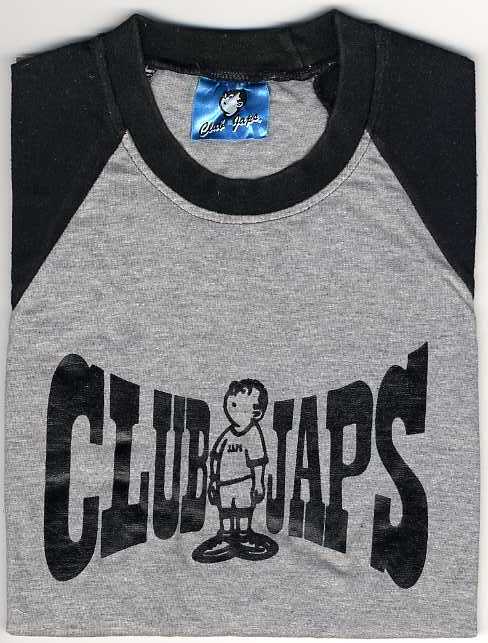 Club Japs t-shirt |
 Forthcoming |
 Forthcoming |
 Forthcoming |
"Jap" in food
Futatsui, a town in the Yamamoto district of Akita prefecture until 2006, is now part of Noshiro city. The locality is still known for a sherbet-like strawberry-flavored "ice sweet" or "ice candy" (氷菓 Hyōka) called ジャップ in katakana and "Jappu" in roman script.
The origins of Jappu as a product are not clear to me, though apparently it goes back to at least the 1940s. The website of a maker who claims to be a descendant of an earlier maker states that the name "Jappu" apparently derives from "jabujabu" -- a term for the sound of splashing in either water or a slush of melting snow.
The maker offers this explanation by way of easing the minds of people who might have misgivings about the word. He doesn't say these misgivings might be, but rather assumes that people will know that ジャップ usually means "Jap" and that "Jap" has come to be regarded as a disparaging reference to people or things "Japanese".
Light snow
The maker refers to similar products called "aisu" (アイス) or "ice" -- the more generic name for frozen deserts, including popsicles, ice milk, even at times ice cream or sherbet -- but states that Jappu is different, softer, a "light snow" (淡雪 awayuki) of the kind that falls in spring.
While apparently snowy in texture (I have never had one), Jappu appears to be made in a way that allows it to be poured into cones or cups. One recent display shows a variety called "Soft Jappu", which I would appear to have a creamer texture comparable with "sofuto aisu" (ソフトアイス) or "soft ice" -- the "soft ice cream" used to make a "softie".
"Jap" in music
"Jap" and ジャップ in the music world has a certain counter culture slap to it. In some cases its use resembles the use of "nigger" and "chink" by musicians who conciously "repossess" these now forbidden words as though to say to the language police -- "These words were used to refer to us, so they're our words, and how we use them is our business -- thank you."
Mostly, though, "Jap" is deployed in music world to create an image of funkiness for the performer or a work. A good example is use of "Jap" in the "Rudie Jap" CD title.
Rudie Jap ルーディー ジャップ
This is Tokyo Rock 'n Reggae Style
Rocky K·O·G·A / Cookie / Mukumi / Shiga
CD, All The Way Records, 2006-4-30
1. GUNMAN
2. Johnny to the Bad
3. バラ色
4. Hooligan
5. HARDER THEY COME
6. REVOLUTION ROCK
7. THAT'S MY WAY
"Jap" in movies
"Jap" is of course found in the dialogs of a number of dramatic films produced in Asia, the Americas, and Europe. The two DVDs shown in the following gallery are not the usual cinematic dramas but productions of interest to surfers and car buffs.
Black Jap
Black Jap is a sequel to a series of surfing DVDs called Black Jack produced by pro surfer Imamura Daisuke (今村大介). The "Black Jack" series -- Black Jack, Black Jack II (2006), Black Jap Super Light (2007), and Black Jack III Legend -- feature mostly non-Japanese surfers at American and Australian beaches. "Black Jap" features Imamura himself and other Japanese surfers, and some foreign surfers, at a competition in Yokohama.
Jap State
Jap State is more fully titled JAP STATE:車改造大作戦!!! (Jap State: Kuruma kaizō Daisakusen!!!) or "Jap State: Car Rebuilding Wars!!!". The DVD, produced by MTV Japan, originated as an MTV Japan program of the same title. Directed by Inoue Hidenori (井上秀憲), the DVD includes many cuts from the TV program, and feature's its MC, IKURA, a musician who owns the autoshop studio "Jap State" and is known in Japan's car world as a radical customizer of American and Japanese cars and bikes.
The DVD is billed as a Japanese version of the Pimp My Ride DVD series in the United States. MTV also released an original soundtrack of the movie's mostly hip-hop theme songs.
According to Ikura's official website, he debuted in 1984 as the leader of the vocal group Moon Dogs. The group produced a number of singles and albums. He also emceed some music-related TV programs.
In 1990 he opened Chicano Park, the predecessor of the present L-Garage custom car studio, and in 1991 he started Super American Festival, Japan's biggest American car event. He curtailed his singing in 1996, and his entertainment world work in 1999, to devote himself to snowboarding, surfing, and American cars.
By 2005, however, he had resumed recording music, and in 2007 he combined music with his love for customized cars by producing and appearing in the MTV Japan program "Jap State". In July 2007 Paramount release the DVD based on the TV series. And in 2008 he won a prize at the Grand National Roadster Show, held in Pomona that year, for a 1962 Corvette he had customized.
| "Jap" movies gallery | ||||
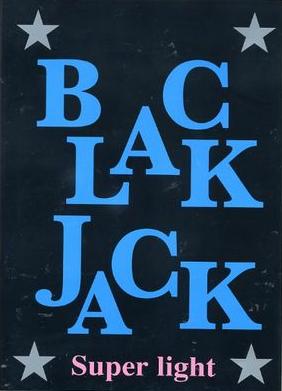 Black Jack Super Light 2007 DVD |
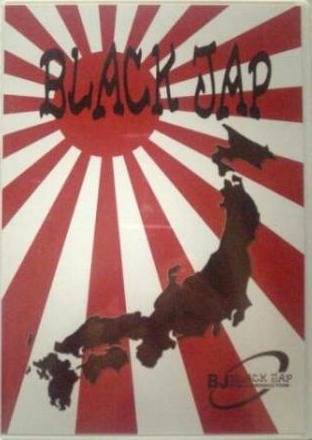 Black Jap DVD |
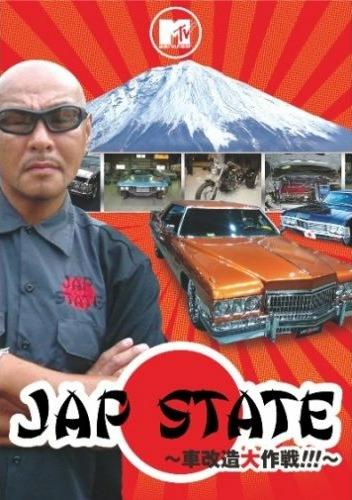 Jap State 2007 DVD |
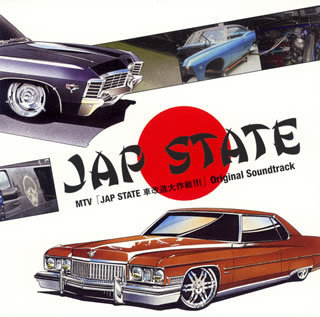 Jap State Soundtrack 2007 CD |
|
Humor
Good humor is priceless, but it may come at a price. People easily laugh at others, but may not appreciate laughter directed at themselves.
Jokes, when about other people, whether individuals or groups, are best if good natured -- based on something intrinsically funny about the human condition. Good "ethnic humor" works when the situation that evokes laughter, while associated with a particular ethnic group, is essentially human and therefore shareable -- and hopefully perceived that way.
Unfortunately, the human condition also includes the capacity for disliking others because of real or imagined traits that become the butt of jokes intended to disparage land ridicule, while venting discomfort and even hatret, rather than in the spirit of shared levity.
JAP and Jap
In the United States at least, humor that involves the word "Jap" in reference to "Japanese" is generally frowned on, at least by people who have reason to dislike the word "Jap". People who dislike "Jap" may also dislike "JAP" as an acronym, simply because it is spelled the same way and hence has the capacity to evoke similar feelings in those who don't know the meaning of the acronym.
"JAP" or "J.A.P." could mean "Jewish American Princess", but a Japanese American who sees such letters on the cover of a book, not knowing what the book is about, may experience a few moments of discomfort. So should such acronyms not be used? Even they are not about Jewish American Princesses, but about Japan?
The most interesting J.A.P. humor I have seen of late is Mad Amano's "Japan Airlines Party" parody (below).
Mad Amano's "Japan Airlines Party" parodyMad Amano (マッド・アマノ b1938), a graphic designer and parodist, is a regular contributor of graphic parody to the monthly magazine Tsukuru, which presents a fairly serious mix of commentary on social and political issues and the arts. Page 1 of the March 2010 issue typical of Amano's use of photo montage to visually support satirical commentary, he shows the incumbent prime ministry of Japan, Hatoyama Yukio (鳩山由紀夫 b1947), inviting Inamori Kazuo (稲盛和夫 b1932), a highly successly entrepreneur, coporate founder and executive, to take over his position as premier of Japan. The catch is that there will be no pay. In real life, Hatoyama had recently been scandalized for accepting huge amounts of money from which his mother had deposited in his account. The money was part of the Hatoyama estate, but Hatoyama had failed to report it, in violation of Japan's political funding laws. Hatoyama had attempted to parry criticism by stipping himself of his government salary. He had then asked Inamori to become the CEO of Japan Airlines, which had entered bankruptcy protection in January, and turn the company around. Inamori took over the company in February, and by November 2012, supposedly working without a salary, he restored it to sufficient solvency that it was relisted on the Tokyo Stock Exchange. JAL is called "Nippon Kōkū" (日本航空) in Japanese. In this name, "kōkū" means "navigating the air" or "aviation", just as "kōkai" (航海) means "navigating the sea" or "sailing". JAL had taken pride in being Japan's flag carrier, and forgotten that it had to compete like other airlines. In the parody, Amano describes Inamori as the CEO of "Nippon Kyokū" (日本虚空) or "Japan Empty Space" -- "kyokū" meaning thin air, space, nothing. He also declares that the logo of "Nippon Kyokū" (日本虚空) has changed -- to JAP. Readers are left to imagine that this alludes to Hatoyama's liberal "Democratic Party of Japan" (DPJ) -- which had never really got off the ground when it replaced the conservative "Liberal Democratic Party" (LDP) in 2009. DPJ was as bankrupt politically as JAL was economically. Foster on Amano on parodyMariko A. Foster received a Juris Doctor in June 2012 from the University of Washington School of Law. In a above aricle, citing Amano, she defined parody as follows (Foster 2013, page 5; notes omitted). Parody is a creative genre that comments in a critical manner. As "a dialectic substitution of formal elements whose functions have become mechanized or automatic," parody is an important outlet for human expression to point out the conventional, criticize the status quo, and suggest change. Mad Amano, Japan's leading political parodist, has stated that "[expressing] ridicule is the most effective weapon for us common people to take a stand against authority." As Foster points out, "ridicle" is only one manifestation of parody. She cites the word from a 2004 Japan Times article, so who knows what Amano actually said. Amano may not be the "leading" political parodist in Japan, but he is definitely one of the leading parodists. During the 1970s, when I settled in Japan, he was center of controversy in a highly publicized court case in which a photographer alleged that Amano's use his prize-winning photograph, without his permission, in a photo-montage parody, was illegal. Amano lost the case. Foster describes the case in her report, which criticizes Japan's courts for failing to understand parody. Foster 2013
Mariko A. Foster |
||||
"Jap" in English jokes
Jokes are stories about situations that are perceived as funny, on account of the situation itself, or because of the word play that the situation enables. Situational humor may cross language borders so long as the situation is not bound by the culture in which the humor originated. Puns, by definition, are linguistic rather than situational, hence generally cannot be translated.
Jokes can be light or dark, tasteful or tasteless, funny or boring, clever or silly. All jokes are stories that unfold in situations with funny outcomes. They situations are of two kinds -- those that funny in their own right, and those that require a "butt" -- an object of fun making that might be discriminatory or disparaging.
Some humorists consider puns the lowest level of humor, but good puns are better than bad jokes.
Did you hear about the mother cat who swallowed a ball of yarn?
Most people have to be told, "She had mittens." Adults will smile at its cuteness, and children who know that cats have kittens, and perceive the pun, will giggle.
This sort of joke will upset only people who can't stand silliness.
How do you tell whether an Asian businessman on an elevator is Japanese?
This was going around in the 1970s when I first came to Japan. I've heard it told by Asians, even by Japanese, who get a kick out revealing the punch line -- "If he pushes the 'close' button, he's Japanese."
"Ethnic" and "national character" jokes hinge common stereotypes, which may or may not be considered favorable or laughable. At the time this joke was popular, Japanese were perceived by some people outside Japan -- as well as by some Japanese -- as always in a hurry. They can't relax, except on trains and at meetings, when they sleep.
Some people will consider jokes of this kind a slight on the "butt" of the joke -- in this case, Japanese. Or is the joke on those think "all Orientals look alike"?
Jokes of this can kind can be constructed around any stereotyped object -- blondes, lawyers, or your nationality, ethnicity, race, religion, ideology, or illness of choice, even a place."
Philadelphia is sponsoring an essay contest.
The theme is "Why do you like Philadelphia?"
People who live in Philadelphia are not eligible.
1st prize is a weekend in New York.
2nd prize is a week in Miami.
3rd prize is a month in Philadelphia.
"Philadelphia" could be anywhere that has an image of being boring, dangerous, or not a place most people would say they want to go. But it would matter. Any place -- even a totally fictional place would do.
What do you get when you cross an X with a Y?
This formula generates virtually unlimited varieties of jokes that span the spectra of taste and interest -- from extremely funny to shockingly crude.
The "cat" and "yarn" joke also qualifies as a "cross" joke.
What do you get when you cross a cat and yarn?
What do you get if you cross a cat with a parrot?
What do you get when you cross a frog with a bunny?
Mittens, a carrot, and ribbit, ribbit.
What do you get when you cross an insomniac, an agnostic, and a dyslexic?
Someone who stays up all night wondering if there really is a Dog.
What do you get when you cross a Japanese American and a Peruvian?
Now I've got your attention.
You've never heard this one.
I just made it up.
You can probably see where it is going.
As in all "cross" jokes -- as in all humor -- congering up the punch line of this joke requires perceiving the mechanism of the "pun" in the mind of the originator. This particular joke is contrived for only one purpose -- as a foil for eliciting the word some people are afraid of saying.
"Jap" in comics
Forthcoming.
Nikkeijin themesJapan's publishing industry has put out numerous works about the experiences of Japanese emigrants and their foreign born, mostly non-Japanese descendants in various countries around the world. Partly as a result of the internment by the United States of Americans of Japanese ancestry residing in westcoast states at the outbreak of the Pacific War, as well as the internment of Japanese nationals elsewhere in the United States as enemy aliens, most non-fiction and fiction featuring so-called "Nikkeijin" or "Japan-related persons" -- most of whom are not Japanese -- deals with Japanese Americans. Many graphic novels, most of them action stories, feature Japanese overseas -- meaning Japanese nationals residing somewhere outside Japan. A few, however, depict Japanese Americans in stories that typically involve experiences of racial discrimination, especially during the Pacific War. The best known such stories are Gangaragan (1981-1982) and Buddha Head (1997-1998). Hasegawa Hōsei's "Gangaragan" (1981-1982)Hasegawa Hōsei (長谷川法世 b1945), who writes the stories he draws, was born in Fukuoka city on 6 August 1945, the day the United States dropped Little Boy on Hiroshima. In 1980, he shared the 26th Shōgakukan Manga Award for two works, primarily Hakatakko junjō (博多っ子純情), secondarily Gangaragan (がんがらがん). Both works were being serialized at the time, Hakatakko junjō since 1976, Gangaragan since the year of the award. Hakatakko junjō would reach 34 volumes when it ended its run in 1983, and Gangaragan would reach 8 volumes by it ended the same year. Hasegawa, born and raised in Fukuoka city, was himself a "Hakatakko" or "Hakata-ite" -- Hakata being the older name of the historically important port town that later became Fukuoka, and is today the name of a ward in the city. 長谷川法世 Hasegawa Hōsei Gangaragan was serialized in Shōgakukan's bimonthly comic magazine Biggu komikku orijinaru [Big comic original] from 1980-1983, and published in 8 volumes in Shōgakukan's Big Comic series from 1981-1983. The story portrays the history of Japanese migrants to the United States. Forthcoming Hasegawa_Gangaragan_1_1981-09-01_yb.jpg Hasegawa_Gangaragan_2_1981-10-01_yb.jpg Hasegawa_Gangaragan_3_1982-03-01_yb.jpg Hasegawa_Gangaragan_4_1982-04-01_yb.jpg Hasegawa_Gangaragan_5_1982-05-01_yb.jpg Hasegawa_Gangaragan_6_1983-08-01_yb.jpg Hasegawa_Gangaragan_7_1983-09-01_yb.jpg Hasegawa_Gangaragan_8_1983-10-01_yb.jpg Volume 2, 231 pages Volume 2, 236 pages Volume 3, 225 pages Volume 4, 222 pages Volume 5, 218 pages Volume 6, 220 pages Volume 7, 218 pages Volume 8, 218 pages 100 percent 25 25 25 25 1 1 1 1 2 2 2 2 CAP 2 Takajo_Hashimoto_Buddha_Head_1_000_yb.jpg Takajo_Hashimoto_Buddha_Head_1_001_yb.jpg Takajo_Hashimoto_Buddha_Head_1_002-003_yb.jpg Takajo_Hashimoto_Buddha_Head_1_004_005_yb.jpg Takajo_Hashimoto_Buddha_Head_1_198-199_yb.jpg Takajo_Hashimoto_Buddha_Head_2_000_yb.jpg Takajo_Hashimoto_Buddha_Head_2_001_yb.jpg Takajo_Hashimoto_Buddha_Head_2_002-003_yb.jpg Takajo_Hashimoto_Buddha_Head_2_204-205_yb.jpg Takajō Masahiko's and Hashimoto Kozō's "Buddha Head" (1997-1998)鷹匠政彦 (原作)、橋本孤蔵 (画) Takajō Masahiko (story), Hashimoto Kozō (drawing) The original episodes -- 16 Acts and 1 Final Act -- were serialized in Shūeisha's bimonthly comic magazine Manga Ooruman (マンガオールマン) magazine in 1997 and 1998. Volume 1 was published while the serialization was still running, and Volume 2 was published as soon as it finished. Volume 1: Acts 1-8 published in Manga Allman, Nos. 11-18, 1997 The author, Takajō Masahiko (鷹匠政彦 b1952), is an originator of comic stories drawn by others, such as Hashimoto Kozō (橋本孤蔵 b1965), who draws stories originated by others. Takajō reportedly interviewed some former 442nd soldiers and visited the sites of Califoria and Arizona Japanese American internment camps. Whether Hashimoto accompanied him is not clear. The story depicts experiences of Japanese Americans during the Pacific War, through the voice of a protagonist who served in the 442nd Regimental Combat Team, the "Go For Broke" U.S. Army unit composed of nisei "Buddha Heads". (See Basic combat training (Ft. Ord) for an account of my own encounters with a "Buddha Head" squad while serving in the U.S. Army in 1963). Forthcoming Hasegawa_1981_Gangaragan_1_yb.jpg Hasegawa_1981_Gangaragan_2_yb.jpg Hasegawa_1981_Gangaragan_3_yb.jpg Hasegawa_1982_Gangaragan_4_yb.jpg Hasegawa_1982_Gangaragan_5_yb.jpg Hasegawa_1982_Gangaragan_6_yb.jpg Hasegawa_1983_Gangaragan_7_yb.jpg Hasegawa_1983_Gangaragan_8_yb.jpg Takajo_Hashimoto_1997_Buddha_Head_1_yb.jpg Takajo_Hashimoto_1998_Buddha_Head_2_yb.jpg
|
|||||||||||||||
Tomizawa Jun's "Japan Armed Police" (J.A.P.)Forthcoming. Tomizawa_1981-53_commander cover Tomizawa_1983_commander_1_cover Tomizawa_1983_commander_1_004-005 Title Tomizawa_1983_commander_1_020-021 Watch Tomizawa_1983_commander_1_082-083 Elevator Tomizawa_1983_commander_2_cover Tomizawa_1983_commander_2_008-009 Plane Tomizawa_1983_commander_2_102-103 Cap Tomizawa_1983_commander_2_192-193 Logo USE THESE Tomizawa_1983_commander_1_000000.jpg Tomizawa_1983_commander_1_004005.jpg Tomizawa_1983_commander_1_020021.jpg Tomizawa_1983_commander_1_082083.jpg Tomizawa_1983_commander_2_000000.jpg Tomizawa_1983_commander_2_008009.jpg Tomizawa_1983_commander_2_102103.jpg Tomizawa_1983_commander_2_192193.jpg 富沢順 (富沢ジュン) Tomizawa Jun 富沢順 (富沢ジュン) < Tomizawa Jun > Volume 1: 1983, 189 pages (4 episodes) Volume 1: 1983-2-15 (1st), 1983-7-15 (5th) Volume 2: 1983-3-15 (1st), 1983-7-15 (4th) Volume 1: 1983, 189 pages (4 episodes) Volume 2: 1983, 196 pages (5 episodes) Tomizawa Jun's "Commander Zero" stories were serialized in the comic magazine Weekly Shonen Jump (週刊少年ジャンプ Shūkan Shōnen Janpu) from 1981 Issue 53 (14/21 December 1981) to 1982 Issue 16. The episodes were then collected in two volumes published in 1982. The story is about the battles between Commander Zero, who wears a suit of armor when fighting the cyborgs of the mysterious Phoenix organization, and the romance between him and Morita Yumi (森田由美), a female officer who knows him only as Hagane Reita (鋼零太), an ordinary human detective. The Metropolitan Police Department, to battle a gang of terrorists out to take over the Japanese government, has secretly formed a group called JAP, meaning Japan Armed Police (日本武装警察 Nippon Busō Keisatsu), and led by an officer named Shindai (神代). Under Shindai are warriors, called commanders, with special fighting skills that require transformation. JAP commanders are ordered into action only in cases that ordinary police cannot handle. When not engaged in such operations, they work as ordinary officers in ordinary posts. Hagane, bespectacled and wigged, is an investigator in the homicide division of a local Tokyo precinct. Only Shindai, who happens to be his supervisor, knows that he is also Commander 0. No one else in the precinct is even aware of JAP's existence. Morita, who Hagane dates, is an officer in the precinct's traffic division, but is totally unaware of his alternate identity. Hagane, when ordered by Shindai to go into action as Commander 0, makes his to the locker room, descends into a secret passageway behind his locker, and rides off to fight evil on a special bike. Only in the midst of battle does he realize his true calling. I am reminded of my own youthful fascination with Straight Arrow. When rustlers, stagecoach robbers, and other bad hombres needed arresting, Steve Adams, owner of the Broken Bow ranch, would sneak into a secret cave and gallop out a Comanche brave on a golden palomino named Fury. I ate Nabisco Shredded Wheat to collect the Injun-uity cards. My mother gave me a Straight Arrow mask for my 9th birthday, I brought it to school, lost it, and cried. I believe it was stolen. |
||||
Transforming "Jap" to "J""Who, who are you?"The following comparisons of the opening pages of the magazine and book editions of the first episode of "JAP" is an example of how editors deal with claims against single words or short phrases. The hero of the Balancer stories is a Japanese named Nangō Hyōe (南郷兵衛), who lives in Amsterdam and works as a mercenary. His code name is "J", he has the blood of a Ninja, and in his heart is neither justice nor peace, but only a sense of mission toward completing his assignments. The first episode opens in Amsterdam. A tall slim man with dark hair receives a message from the Colonel. He gathers from the smell of the envelope that the next assignment will will be in the Savannah. In Paris the following morning, he introduces himself to other members of the operation as "Jap" (ジャップ) in the magazine edition (page 28) and "J" in the book edition (page 14). The Colonel briefs them and soon the men are parachuting into an African country, where they take out the factory and crops of a drug plantation. As the poppy fields are burning, he confronts the drug lord (magazine 62, book 42).
So much for the opacity of code words. |
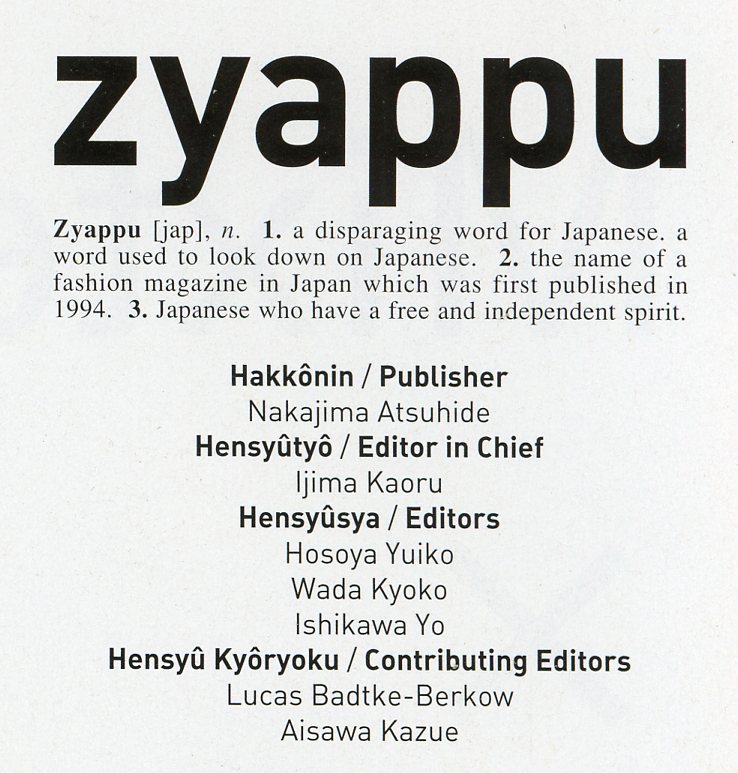
Top of masthead from Winter 1995 (Number 15) issue of zyappu |
"Zyappu" magazine
Few magazines enjoy long life spans. The quarterly run of Zyappu, from Spring 1994 to Summer 1999, was longer than most periodicals of any kind -- which come and go like Kamo no Chōmei's bubbles at the edge of the water. Nothing is permanent, but only a few magazines survive more than a few years.
The magazine began as ジャップ (Jappu) in Japanese and Jap Magazine in English, and the first 11 issues of its 21-issue run carried these names. The last 10 issues, beginning with Issue 12, were called simply Zyappu, reflecting the Kunrei system of romanization the magazine had begun to introduce in some content in earlier issues.
Jap Magazine alias Zyappu found a small readership in the more elevated niches above the valley of neighborhood bookstores, through which flow conventional mainstream beauty and fashion magazines. There were only a few bookstores in the Tokyo area where I could buy the magazine.
Izima Kaoru
The photographer Izima Kaoru (伊島薫 b1954 Ijima Kaoru), the force behind zyappu, seems to have thought the sensibilities of his New Beauty and Colored Beauty photobooks in the early and mid 1990s would sustain the magazine's publication even if sales were limited to artier urban bookstores. However, it folded with the first issue following it's 5th year anniversary in 1999, as though to say goodbye with the century.
Did Izima dream that his photographic and fashion tastes would spread to the point that the magazine would be distributed to ordinary local bookstores on a par with mainstream magazines? I get the impression he took pride in not pandering to the mass conventions. One expression of this "attitude" was to replace all Japanese script -- kanji and kana -- with "rêmazi" from the Fall 1997, Number 14 issue.
The aim of the script change was stated on the "kotoba" editorial of Number 14 -- "Rêmazi no kokoro. Sore wa [Kakko-yosa to Nippon no kokusaika] ni ari." -- meaning "The spirit of rêmazi -- is smartness and the internationalization of Japan". Even the use of [brackets] was novel.
Movements to replace Japanese script with romaji -- to make Japan's language and Japan itself more accessible, not only to foreigners but to Japanese -- go back to the Meiji, Taishō, and early Shōwa periods. In 1928, Nippon-no-Romazi-Sya (日本のローマ字社) published Bottyan by Natume Soseki as part of its campaign to romanize the writing of Japanese in schools and everyday life. Kanji and kana were to be replaced by Nipponsiki-romazi, which eventually became the basis of the government's Kunreishiki scheme of romanization introduced in 1937. See Botchan: Translation rush or glut? in the "Translations" section of this website for an example of how "Botchan" reads as "Bottyan".
Interest in replacing Japanese script with alphabetic script was rekindled after the Pacific war. But opposition was strong, and postwar language reform was limited to reduction in the number of kanji, adoption of simplified versions of some kanji, and a few orthographic among other changes intended to increase Japanese language literacy.
By the time Izima brought out Jap in the 1990s, however, literacy in Japan was high enough that most newspapers and magazines no longer used furigana to show the readings of kanji. And foreigners of all stripes were coming to Japan to study or work. Why, though, would they want to read Japanese in romaji?
Perhaps ジャップ was losing momentum and the shift to Zyappu was an effort to boost sales. But novelties wear off, and the magazine vanished after 7 more issues -- but not before publishing Number 15 (Winter 1997), which focused on what was perhaps the magazine's overarching theme -- "Mikkusu" (ミックス).
Fast forward 25 years
Izima's interest in "mikkusu" reignited his creative fires in 2020, when he set out to create Mikkusu Magazin, a webzine dedicated to interviews with people who are in some sense mixed -- by race or nationality, or sex or gender -- but mainly by blood. The theme makes sense to him because his own father, who died when he was young, was Taiwanese. See Izima Kaoru (伊島薫 b1954) under "Photographers" on the "Occupations" in the "People" section of the Konketsuji website for an overview of Izima's story and links to his activities as a "mikkusu" advocate.
|
"Zyappu" magazine (1994-1999) A gallery of covers and related books |
||||
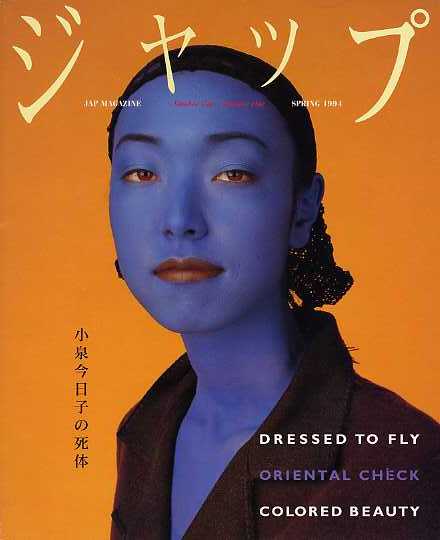 1 (1-1) 1994 Spring First issue |
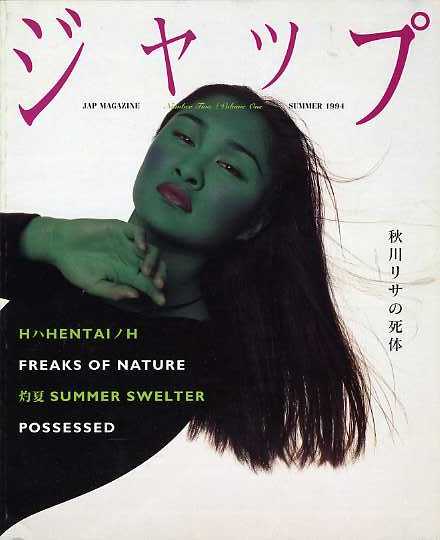 2 (1-2) 1994 Summer Size changes → |
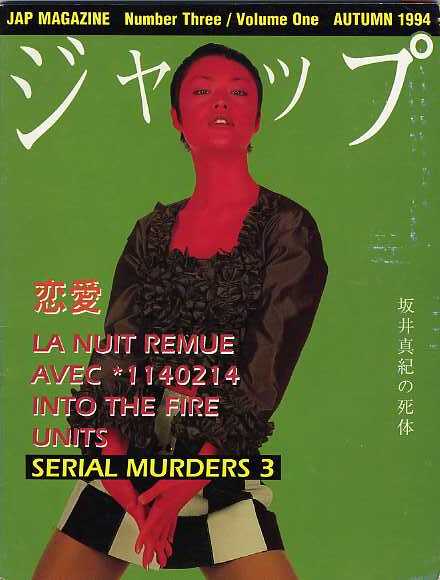 3 (1-3) 1994 Autumn |
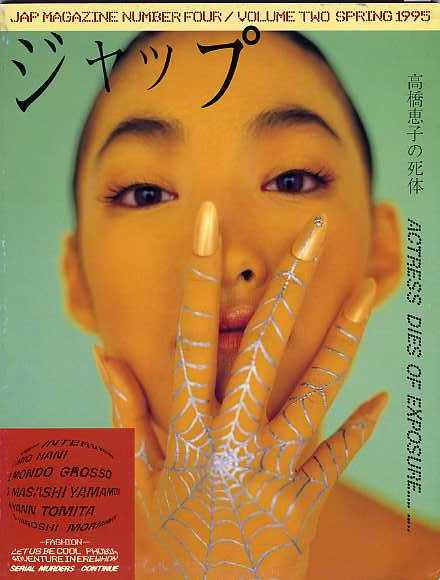 4 (2-1) 1994 Spring |
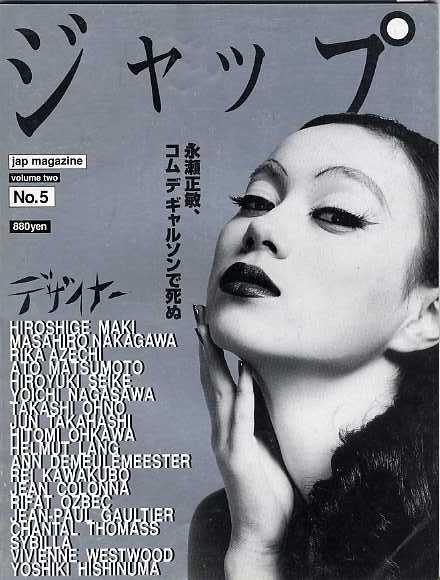 5 (2-2) 1995 Summer |
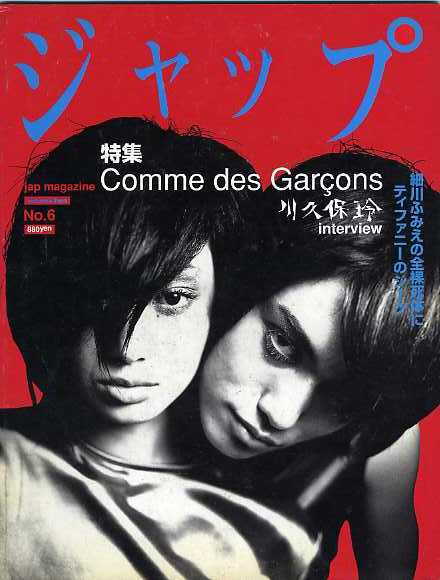 6 (2-3) 1995 Autumn |
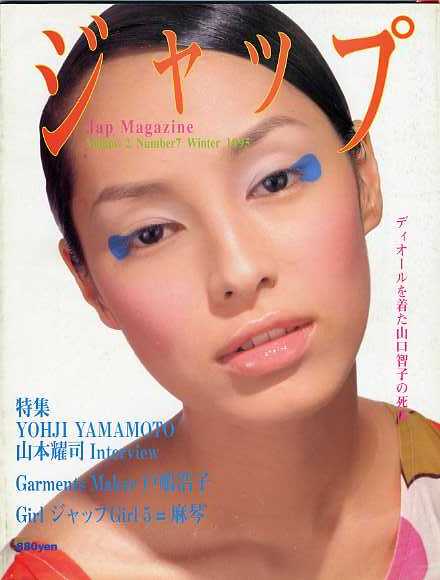 7 (2-4) 1995 Winter |
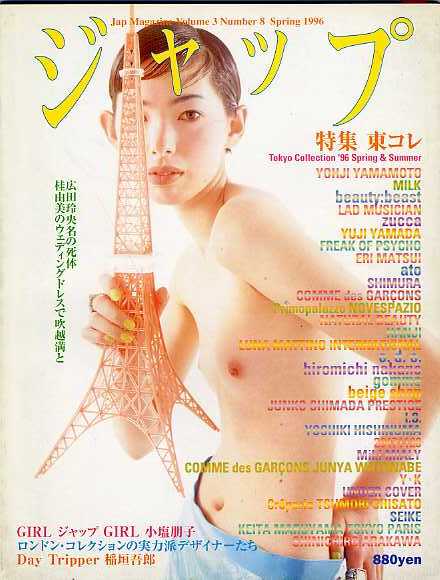 8 (3-1) 1996 Spring |
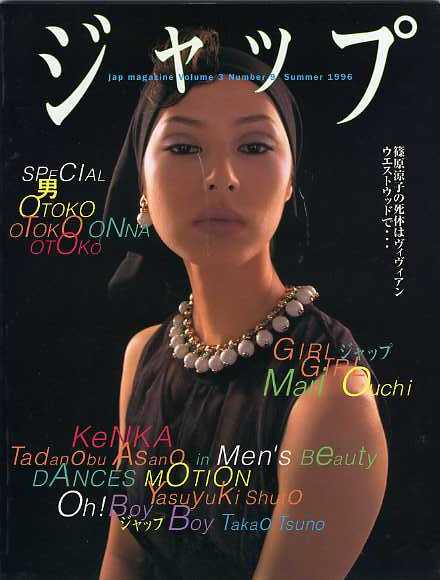 9 (3-2) 1996 Summer |
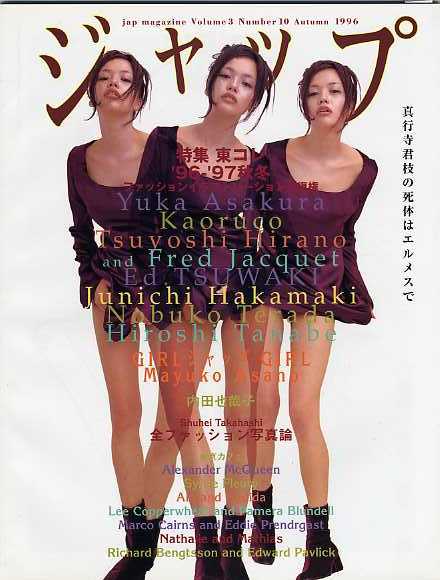 10 (3-3) 1996 Autumn |
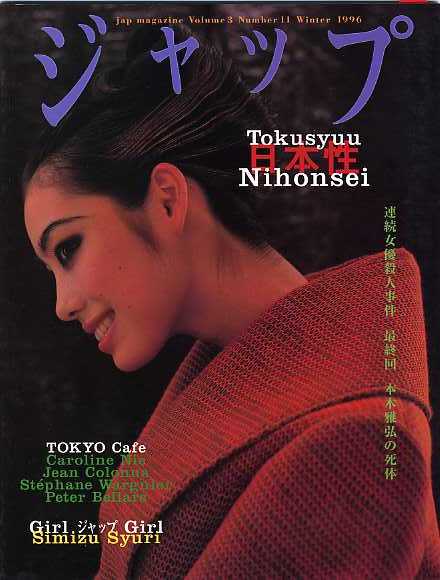 11 (3-4) 1996 Winter |
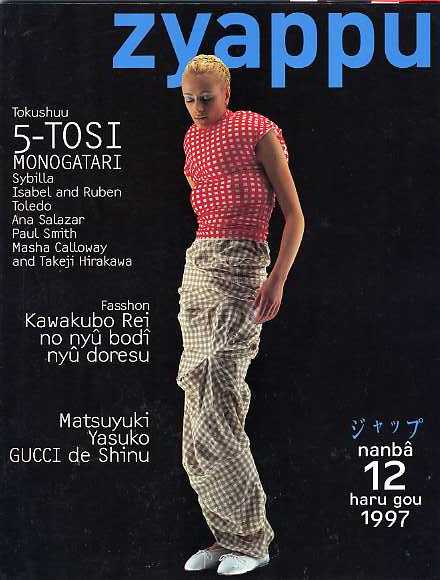 12 (4-1) 1997 Haru |
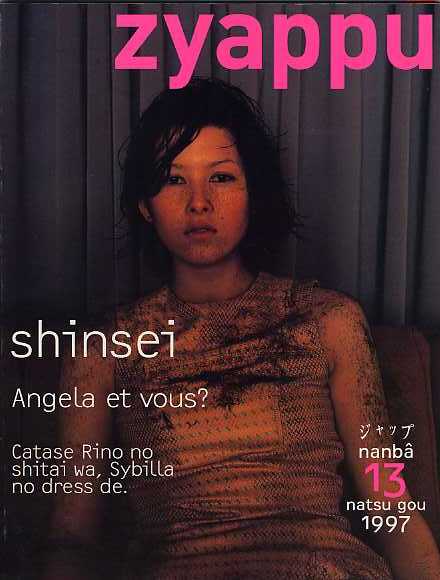 13 (4-2) 1997 Natsu |
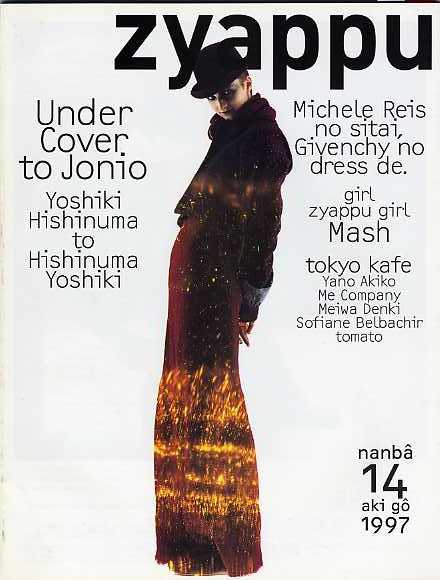 14 (4-3) 1997 Aki |
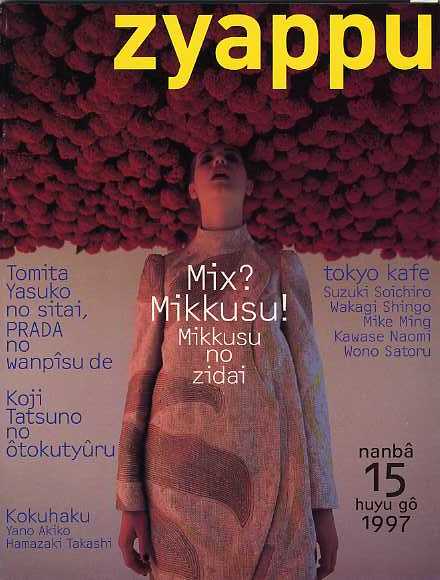 15 (4-4) 1997 Huyu |
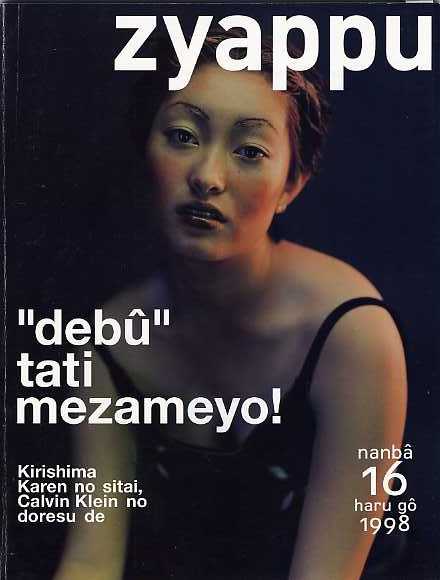 16 (5-1) 1998 Haru |
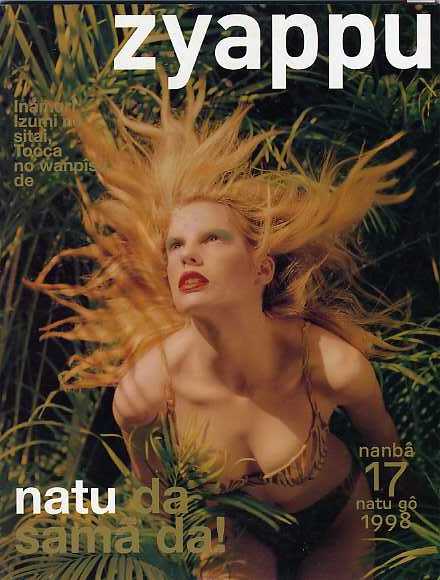 17 (5-2) 1998 Natsu |
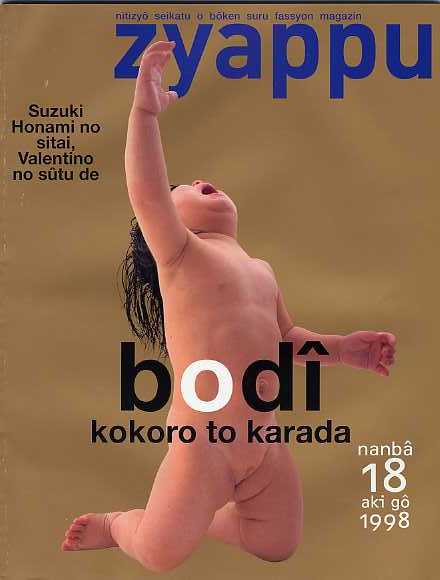 18 (5-3) 1998 Aki |
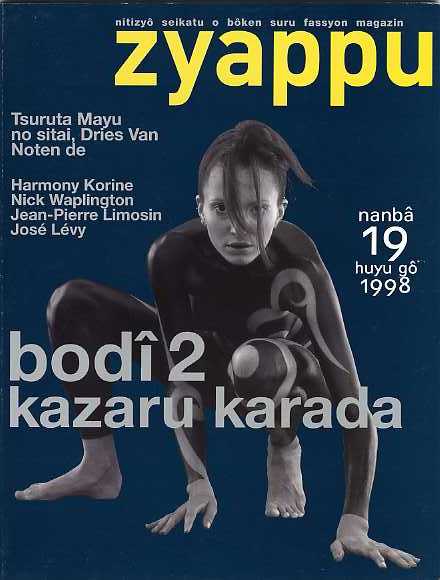 19 (5-4) 1998 Huyu |
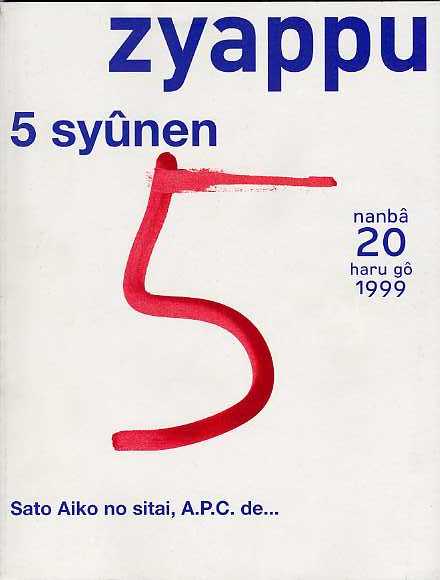 20 (6-1) 1999 Haru |
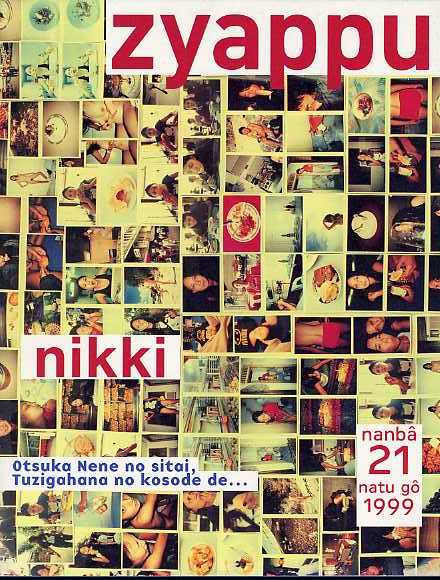 21 (6-2) 1999 Natsu Final issue |
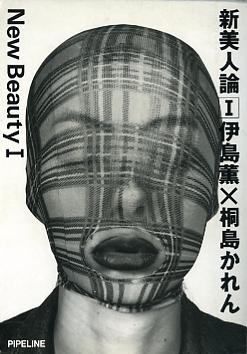 New Beauty 1 (Ijima 1993) |
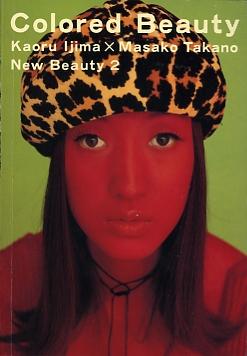 New Beauty 2 (Ijima 1995) |
||
Why "Jap"?
The first issue of Jap featured a cover and a related spread of pictures that would be recycled in Izima's 1995 book Colored Beauty: New Beauty No. 2.
The masthead of Number 1 lists the "Editor-in-Chief" as "KAORI IJIMA". This is not corrected to "KAORU IJIMA" until Number 3. As a photographer he is listed (and in the magazine credited) as simply "IJIMA". By Number 5 his title has become simply "Editor".
Some Kunrei romanization appears in earlier issues, especially from Number 11 when "Zyappu" begins to be defined. "Kaoru Ijima" becomes "Ijima Kaoru" from Number 12 but does not become "Izima Kaoru" until Number 18. Izima's last word on "Rômazi" comes in Number 21, the magazine's last issue (see below).
| Romazi original | Structural translation |
創刊によせて[ First graphs omitted. ] そして21世紀を目前に控えた現在このような意図を持って雑誌を創るなら、日本人であることに誇りを持つと同時に批判精神も持ち日本人の視点で物事を控えることが重要であると感じ、この雑誌を「ジャップ」と名付けることにしました。 [ Last graph omitted. ] ジャップ 伊島薫 |
On [the occasion of publishing the] inaugural issue[ First graphs omitted. ] If now, [as] [we] face the 21st century before [our] eyes, having an intention like this [with the above aim] [I] create a magazine, I feel it is important to have pride in being [a] Japan person [Japanese] and at the same time have a critical spirit, and face matters with the viewpoint of [a] Japan person [Japanese], and [so] [I] decided to name the magazine "Jap". [ Last graph omitted. ] Jap Ijima Kaoru |
 Cover of final issue of Zyappu
Cover of final issue of ZyappuNumber 21, Natu 1998 Yosha Bunko scan |
From "Jap" to "Zyappu"
Izima waits until the Summer 1998 issue of Zyappu -- Number 21, the final issue -- to make what reads like a desparate plea for "Zyapaniizu" (my term) to take pride in not assimilating things Japanese -- beginning with the Japanese language -- into an alien English fold. And for him, romazi is the perfect patriotic antidote .
Number 21 was prefaced with a strong defense by its founder and editor -- Izima Kaoru, as he was calling himself by then (instead of Ijima Kaoru) -- for the romanization of the magazine. Unlike earlier issues of the magazine, which used quite a bit of English, the later issues had less and less English, and Number 21 has only a few words of English embedded in an otherwise entirely romanized issue.
After a number of remarks about romanization and English, Izima directs five questions to the reader, including (1) "Are you pleased when you are said to be like a foreigner?" and (3) "When asked your name by a foreigner, do you answer not your family name [but] your [personal] name, and with an English-esque pronunciation?"
Izimi declared that answering "Yes" to any of the five questions was cause for one to be careful -- and that the questions were intended especially for people who don't understand why "zappu" -- the magazine -- became romanized. He then makes this appeal (page 4).
| Romazi original | Structural translation |
6 nenme no kokoro-ikizappu mo tôtô 6 nenme de aru. [ First graphs omitted. ] Nihonzin ga dôsite Nihonzin de aru koto ni hokori o motenai no ka? Ittai itu ni nattara Datu-A Nyû-ô no zyubaku kara kaihô sareru no ka? Itu ni nattara jap wa zyappu ni nareru no ka? Rômazi-ka wa Nihon no bunka o hakai suru mono de wa nai. Sore dokoro ka syôrai Nihon no bunka o mamoru tame ni yakudatu hazu de aru. Ima de wa dare mo ga yôhuku o kite iru keredo, wahuku o kite inai kara to itte, Nihonzin no kokoro o suteta to kanzite iru hito wa inai darô. Onazi yô ni Nihonzin ga kanzi ya kana no kawari ni rômazi o tukatta kara to itte Nihonzin no kororo o suteru koto ni wa naranai. Sore ni kanzi ya kana mo kanzen ni nakusu hituyô wa nai no de aru. Rômazi o osoreru nakare! Jap! zyappu ni nare! Izima Kaoru |
Heart-and-feeling [Spirit] of 6th year[This] is finally [We have now come to] the 6th year of zappu. [ First graphs omitted. ] Why do Nihon-people [Nipponese] not have pride in being Nihon-people? Whenever will [we] be liberated from the spell of Leaving-A [sia] and Entering-E [urope]? When can jap [Japs] become [be] zyappu [Zyappusu]? Romanization is not something that will destroy the culture of Nihon [Nippon]. On the contrary it should be [Rather it would be] useful in protecting the culture of Nihon in the future. Now everyone wears ocean-clothes [western-ocean clothes, western clothes], but saying that since [but just because] [we] don't wear yamato-clothes [Japanese clothes], no one feels that [we] have discarded [abandoned, forsaken] the heart [sensibilities] of Nihon-people. Similarly, saying that since [just because] Nihon-people have used romazi [roman script] in place of kanzi [chinese script] and kana does not amount to discarding the heart of Nihon-people. And the need to lose kanzi and kana does not exist [And there is no need to do away with kanji and kana]. Don't fear romazi! Jap! Become zyappu! [Japs! Become Zyappusu!] Izima Kaoru |
"Zyappu" definitions
An English definition of "Zyappu [jap]" first appeared in the Winter 1996 (Number 11) issue. It last appeared, with romanized Japanese, in the Spring 1998 (Number 16) issue.
The Winter 1996 (Number 11) issue was the last to be published under the titles ジャップ and Jap Magazine. From the Spring 1997 (Number 12) issue, the magazine was called Zyappu, the Kunrei-romanization of ジャップ.
| Winter 1996 (Number 11) | Spring 1997 (Number 12) |
|
ジャップ |
zyappu |
From Number 16, the definition was expanded with Kunrei romanized Japanese versions of its three components. The Japanese was shown before the English. This definition would prevail through Number 21, the final issue, with only a typographical change from "Zappu [jap]" to "zappu [jap]" from Number 17.
|
|||
Oriental check, Colored BeautyThe cover of the inaugural issue of JAP MAGAZINE featured the model Sayuri (Sayuri) in "Cobalt Blue" (コバルトブルー). The covers for the first 4 issues used photographs shot between 22 February 1993 to 24 November 1994 for the "New Beauty 2" collection published as Colored Beauty in 1995 (see list of publications below). "Colored beauty" was the central theme of the magazine, which saw "color" as a foil for racial discrimination. The "colored beauty" photographs countered the fixation on conventional skin colors by showing people in all possible skin tones without regard for other physical (sexual and racial) features. |
jap it up
jap it up The cover of the Autumn 1994 issue of JAP MAGAZINE (Number 3) pictured fashion model Oda Mayumi (小田まゆみ b1974) in "Yu-Chie-Hon" (月季紅 yue-ji-hong, gekkikō), the blackish red of a dark Chinese rose. The back cover was a canvas for a rap-like jingo that used a number of English words in ways most speakers of the language would think at first were odd. But oddity is the currency of creativity, especially in the service of a strong message. "jap it up" echoes the "attitude" of JAP MAGAZINE as a medium of "repossession" of the English word "Jap" -- an abbreviation of Japan or Japanese that, for some people, became a derogatory word. The same attitude is reflected in the words of Alexander Leehom Wang, better known in Taiwan and elsewhere in East Asian pop circles as Wang Leehom (王力宏 Wang Lihong b1976). Born and educated in America, Wang explained his use of "chinked out" to describe his 2004 album Shangri-La (心中的日月) as follows (Lee-Hom Wang on Shangri-La, as posted on www.wangleehom" 21 December 2004, retrieved 31 May 2007). Then [when composing the music for Shangri-La], I coined the term chinked-out. Derived from the historically derogatory racial slur chink, used to put-down Chinese people, chinked-out reclaims the word, turns its negative connotations upside-down, and uses them as material to fuel the new sound of this music. The term describes an effort to create a sound that is international, and at the same time, Chinese. In this album, I decided to implement some of China's most precious and untapped resources, the musics of its shaoshu minzu [少數民族], or ethnic minorities, concentrating on the regions of Yunnan, Shangri-La, Tibet, Xinjiang, and Mongolia. This is not one of those world music CDs. It's an R&B/hip hop album that creates a new vibe the whole world can identify as being Chinese. Wang, first trained in classical piano and later on other instruments, received a degree in music from Williams College then a master's degree from Berkley School of Music. His talents as an intumentalist, singer, composer, and producer are matched by his ability to articulate understandings of his own and other musical works. His "chinked out" remarks reflect precise usage of a careful speaker, down to the pural "musics" -- which may sound "odd" to less imaginative native and non-native ears, in the same manner that "Japanese cultures" will sound "odd" to people who think of Japan as having only one "culture" -- or the manner that people with racialist minds will feel awkward regarding and accepting people who "don't look Japanese" as Japanese. |
Peace Girl vs Little BoyThe Winter 1995 issue of Jap Magazine (Number 7) -- lower case since the Summer 1995 issue (Number 5) -- carried an interview with the fashion designer Yohji Yamamoto (ヨウジヤマモト) as Yamamoto Yōji (山本耀司 b1943) styled his name and his brand. The more interesting draw of the issue for me, however, was the "lampoon" (?) of Little Boy -- who's atomic might is no match for an Oriental Doll armed with a pack of Peace cigarettes. |
JaponicaThe cover story of the Winter 1996 issue (Number 11) -- the last issue styled Jap Magazine (ジャップ) -- was "Nihonsei" (日本性) meaning "Japan-ness" -- "Japonesque" -- "Japonica". The 1990s witnessed an awakening to the need to draw attention the "Japaneseness" of what in the quainter English of the late 19th and early 20th centuries had been thought of a "things Japanese" by people who read Basil Hall Chamberlain's book by this title. The 1990s also marked the peak of the "Orientalist critique" set into motion by Edward W. Said's Orientalism, which took issue with the way "the West" or the Occidental world viewed "the Orient" -- which, in Said's gaze, embraced all of "Asia" from "West Asia" or "the Near East" to "East Asia" or "the Far East" -- corresponding to the British "Orient" -- unlike the American "Orient", which centered on East Asia -- China, Japan, and Korea -- and more ambiguously included Southeast Asia and South Asia but generally not regions west of India. The "Japonica" fashions shown in this issue are perhaps best thought of as post-modern Japanese parodies of Japan as an "Oriental" country. I don't believe the designers thought for a minute that mainstream Japanese would dress that way out of a sense of patriotic duty to "look Japanese". The fashion industry is as much about "show" and "entertainment" as it is about coming up with apparel that people will actually wear. "Zyappu" definitionAnticipating the restylizing of the magazine as Zyappu from the next issue, this was the first to introduce the definition of "Zyappu" as opposed to "Jap". |
Girl Zyappu GirlThe Spring 1957 issue (Number 12) of Zyappu was the first to be thus stylized. The definition of "Zyappu", introduced in the previous issue, was repeated in this and later issues. This issue also introduced a "romaji" chart which, according to its own rules, should have been called a "romazi" chart -- to facilitate the reader's understanding of the romanization that replaced most Japanese script. To be continued. |
Ijima Kaoru's essay on "Mikkusu"Ijima Kaoru (b1954), the creator and editor of Zyappu magazine, is moderately well-known as a fashion photographer who likes breaking conventions in a world that more often than not only pretends to be creative. From it's very first issue, Zyappu reflected the more "cosmopolitan" face of an industry in which "race" is highly commodified -- whether in Beijing, London, New York, Paris, Rome, or Tokyo. In Japan, as in many countries, racially mixed people are more conspicuous in the worlds of fashion and entertainment than in the general population. Ijima had featured all manner of models in earlier issues of Zyappu, but saw reason to devote the Winter 1997 issue (Number 15) to the subjects of "Mix? Mikkusu! / Mikkusu no zidai" [Mix? Mikkusu! / The age of mikkusu]. Already by this issue, Ijima has steered Zyappu entirely away from the use of kanji, and so everything is written in romazi, as was his introduction to the "Mix? Mikkusu!" feature. Below are both Ijima's romazi version and my structural English translation.
|
||||||||
"debû" tati mezameyo!This is the title of Ijima Kaoru's introduction to the 43-page feature of the Spring 1998 issue (No. 16) of Zyappu (page 33). The feature consists of 11 photo and text essays, including a 2-page text essay by Morley Robertson (pages 68-69). The title commands the "debûs" (fatties) of the world to awake! Ijima created a new word -- not "debu", the usual term for a fat person, but "debû" -- to label the condition of being [attractively] "fat" (hutotte iru) but not [unsightly] "obese" (himan). "Debu" refers to the condition of being "fat" or to a person with such a conditon. Women in particular use the word to refer to themselves or others they regard as having more than a desirable amount of excess flesh. The "fatties" featured in this issue have MB or "meat-to-bone" ratios clearly higher than "slim" and even "plump" but short of "obese" -- though where one draws the line between such physical types depends on personal perceptions of what constitutes "excess" fat. The skin, hair, and facial features of some of the subjects shown in the photo essays may be more in the "model" than in the "normal" class. Both "debu" and "debû" are probably best regarded as subcategories of "freak" -- the term the magazine used in one of its regular features, where the models were generally "odd" compared with those who pose for apparel, shoe, cosmetics, jewelry, and handbag ads, work car shows, and become beauty queens. |
|
"Zyappu" bodies resuscitated Izima Kaoru's bodies, crime scenes, and landscapes, 1992-2017 |
||||

|

|

|

|

|
Izima Kaoru's major publicationsLike many art and fashion photographers, Kyoto-born Izima Kaoru (伊島薫 b1954), once also known as Arizona Gorō (アリゾナ五郎), began in the pits -- shooting CD covers and portraits, fashion displays, commercial ads, whatever paid the rent. After taking to the air with his own wings, he has devoted himself to subjects and settings somewhat off the beaten path of conventional studio and outdoor photography. Since the 1990s, Izima -- who formerly wrote his name Ijima -- has published numerous photo studies of "bodies" in various states of dress and trauma, in domestic and overseas locales, mostly of women, ranging from his wife, to Japanese and other actresses posing as homicide victims wearing designer fashions. More recently, he captured dead insects shot with a digital camera through a microscope with a ring light. In 2017, he exhibited some of his latest work with his son, the photographer Izima Kuntarō (伊島薫太朗 b1988). 1992Edge to Edge # 6 Edge to Edge # 7 1993伊島薫X桐島かれん Kaoru Ijima 19941994-1999 伊島薫 1995Kaoru Ijima 1999伊島薫 2000伊島薫 (photos) 2001Izima Kaoru (photographs) 2004イジメ カオル 2008Izima Kaoru (photographs) 2017 father-son coexhibit伊島薫 伊島薫太朗 2020-2021 webzine Mikkusu MagazinIzima Kaoru 伊島薫 (photographs and interviews) From 2021, at the height of the Novel Corona pandemic, Izima Kaoru launched the webzine Mikkusu Magazin, as a website with related SNS pages, to publish his photographs and interviews of different kinds of "mikkusu" (ミックス) -- his label of choice, since the zyappu days of the 1990s, for people once called "ainoko" or "konketsuji", and now most widely tagged "haafu" (ハーフ). Website Mikkusu Magazin For a fuller look at Mikkusu Magazin as a mixture of photography and advocacy, see |
||||||||||||
